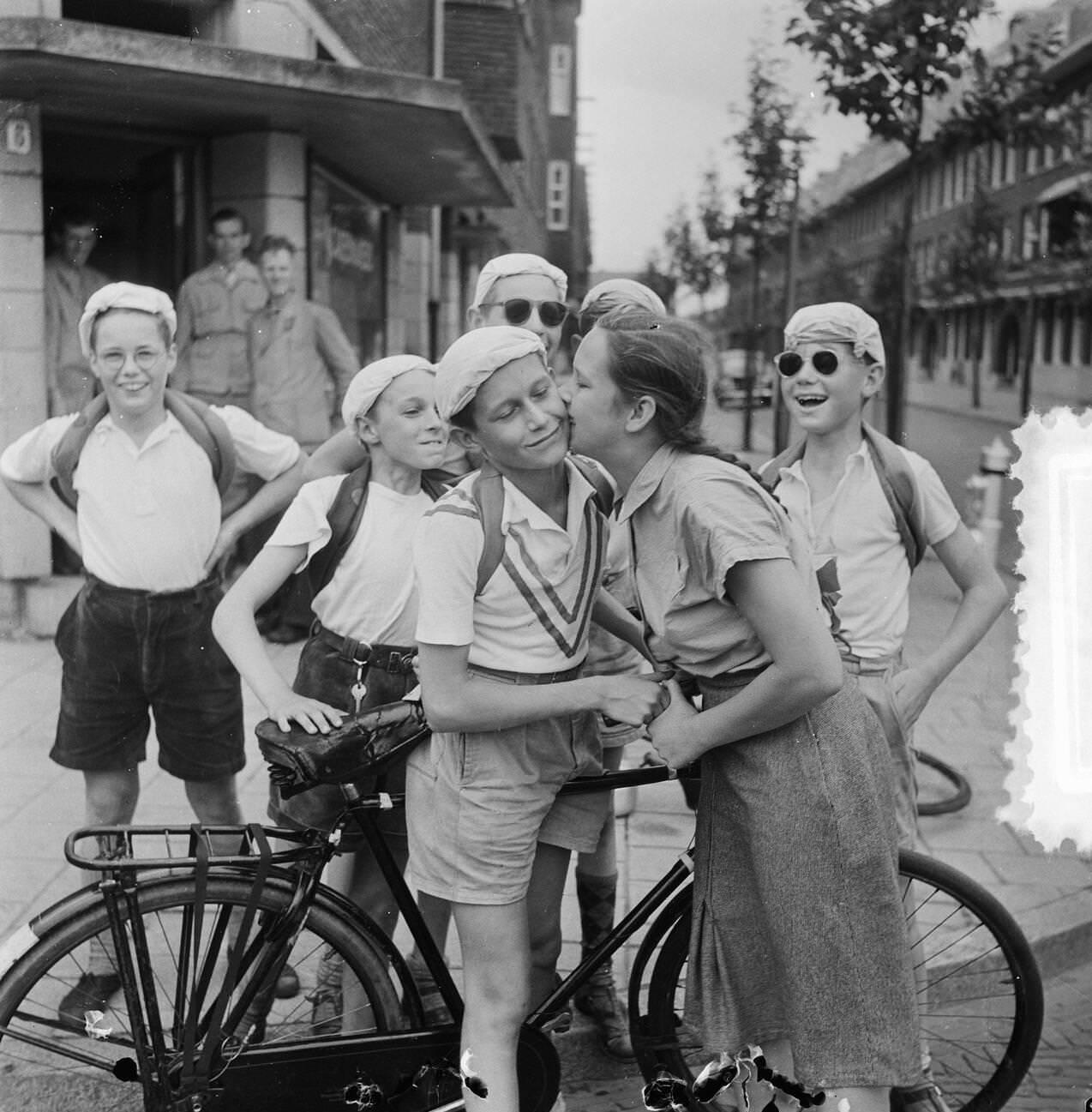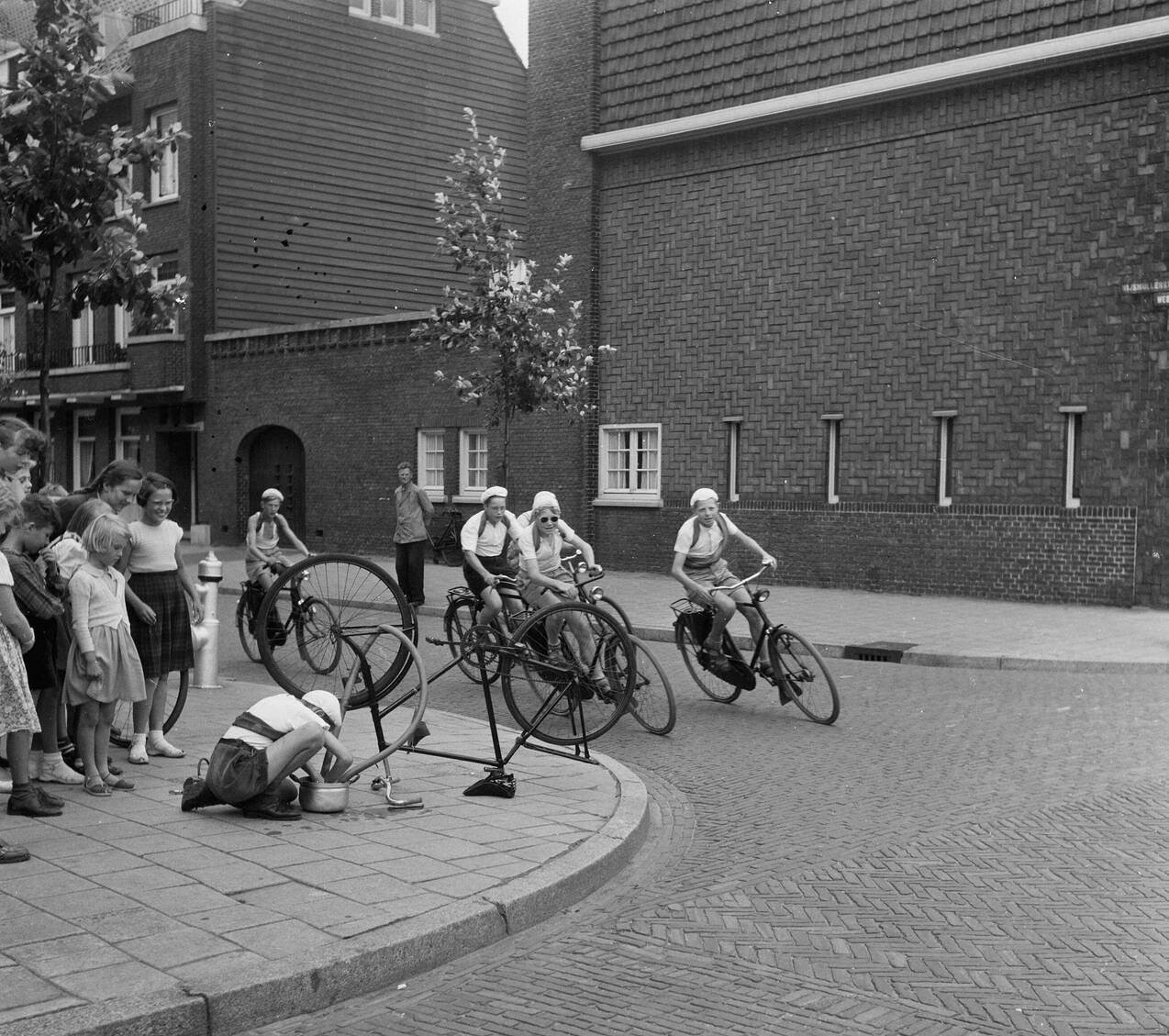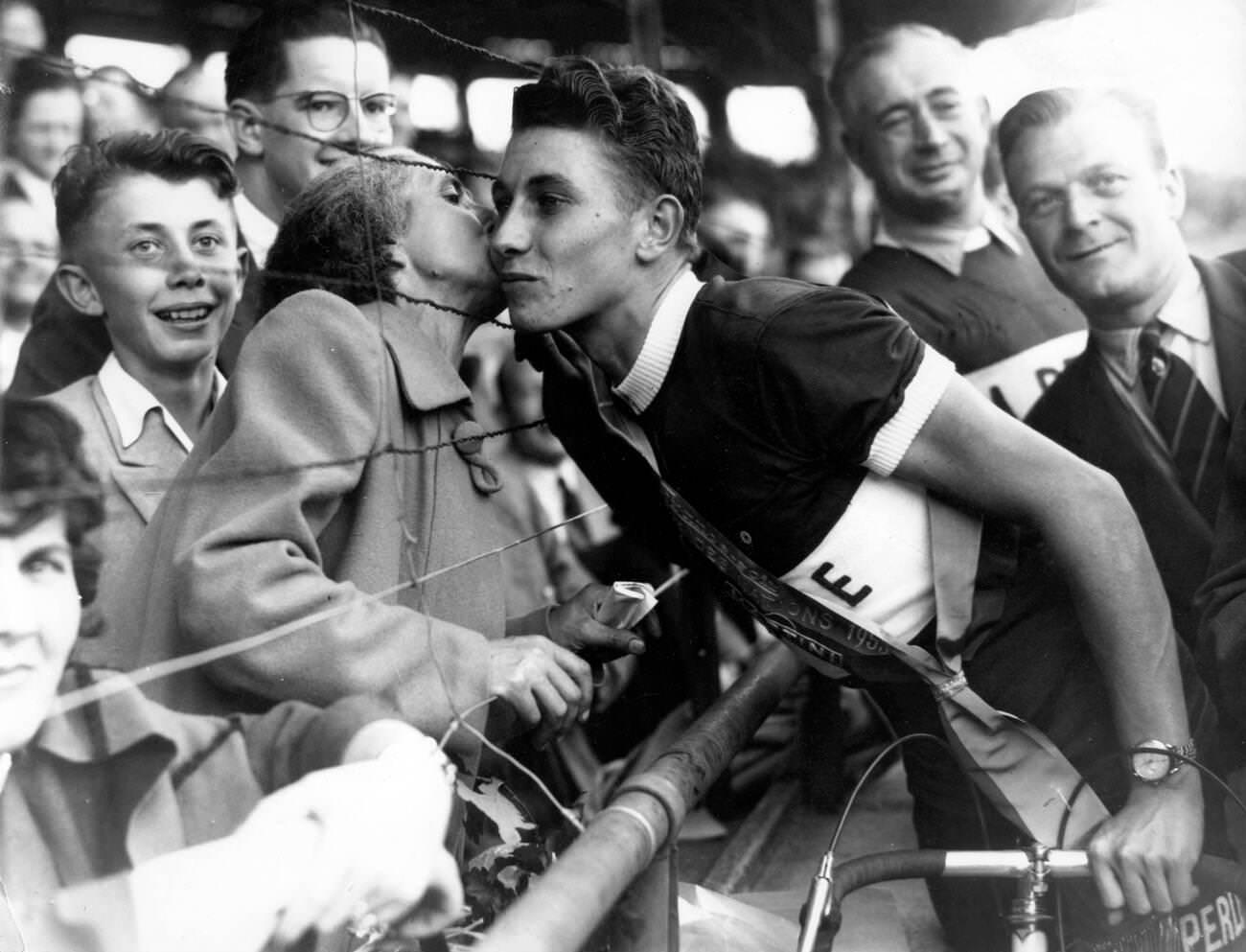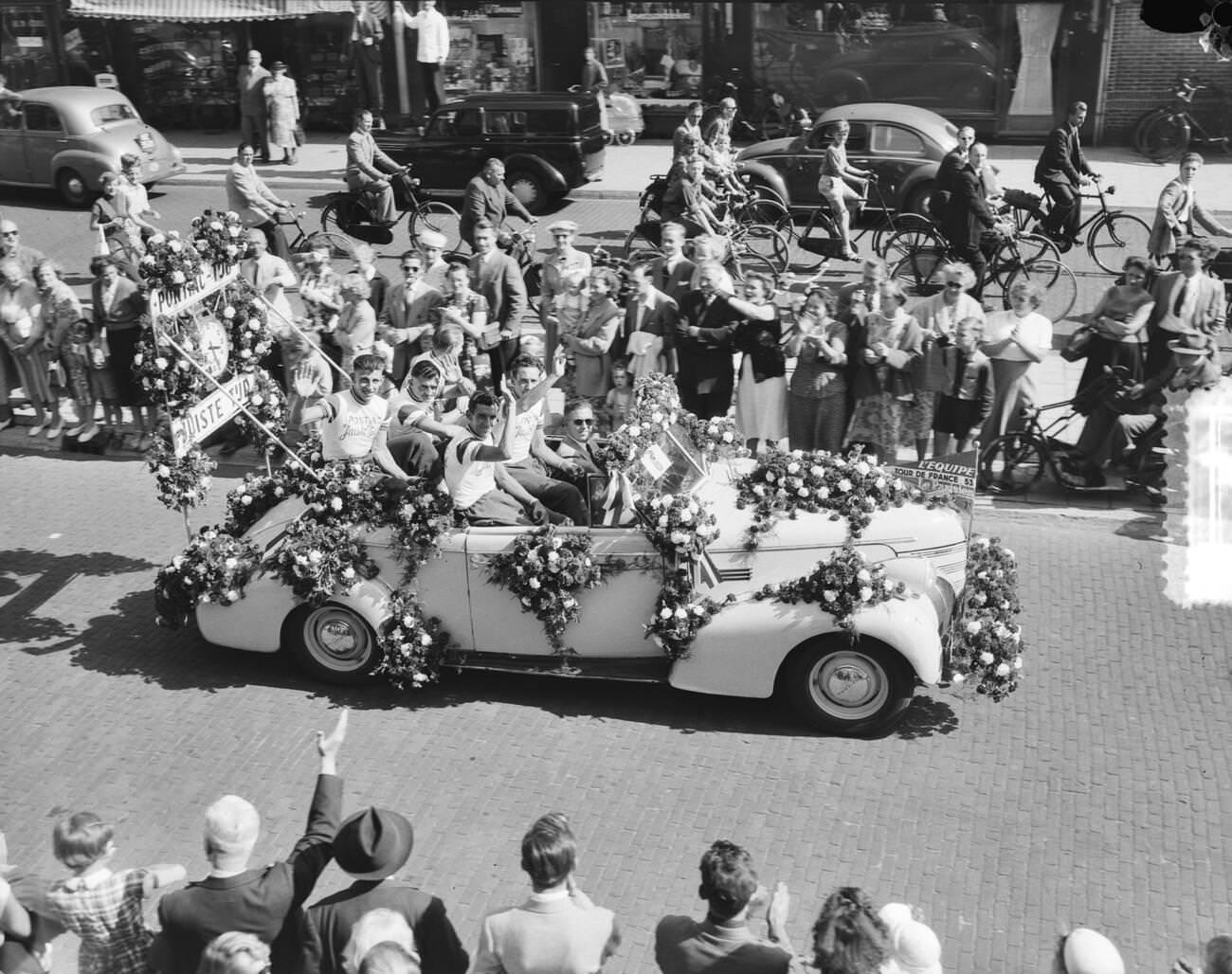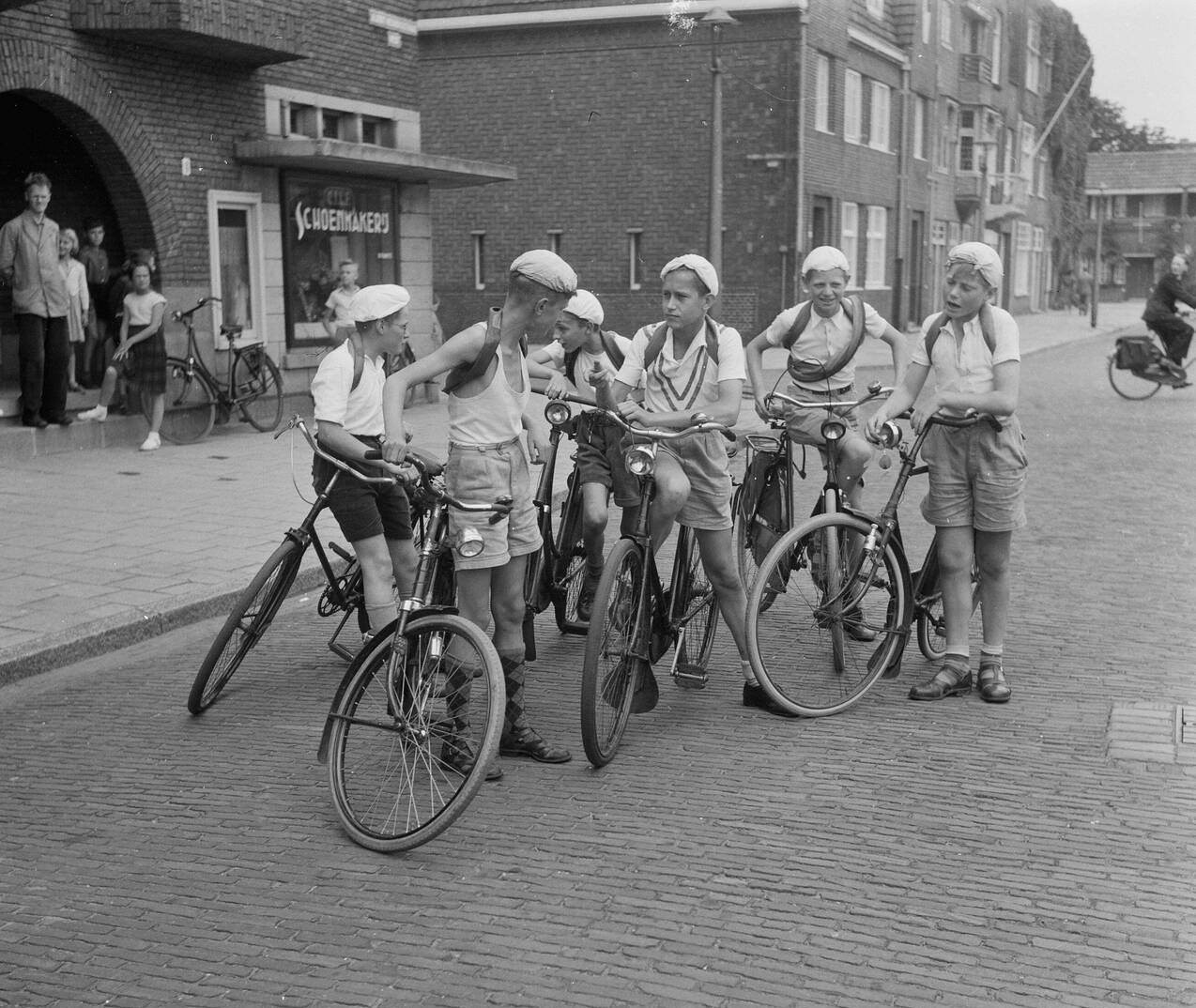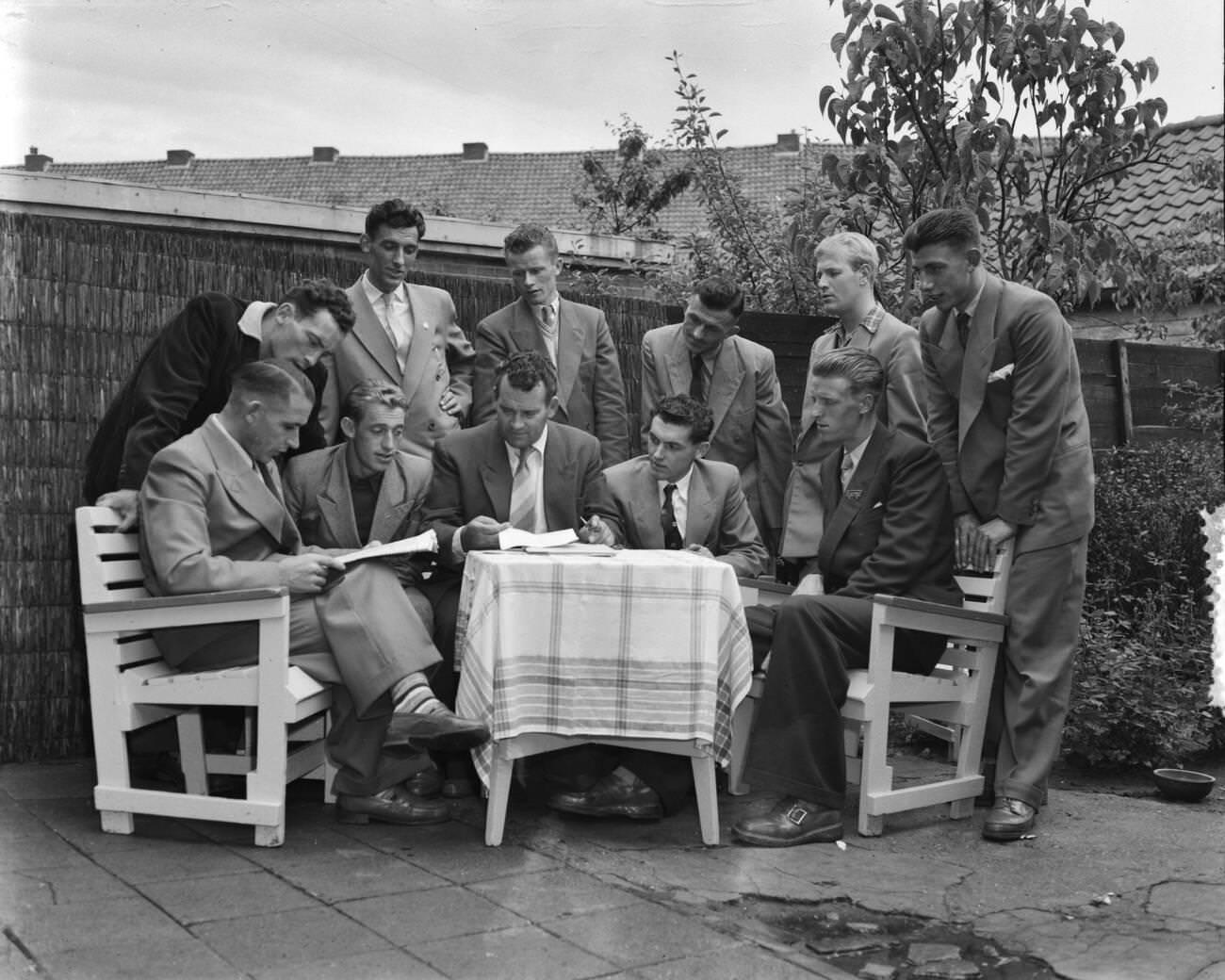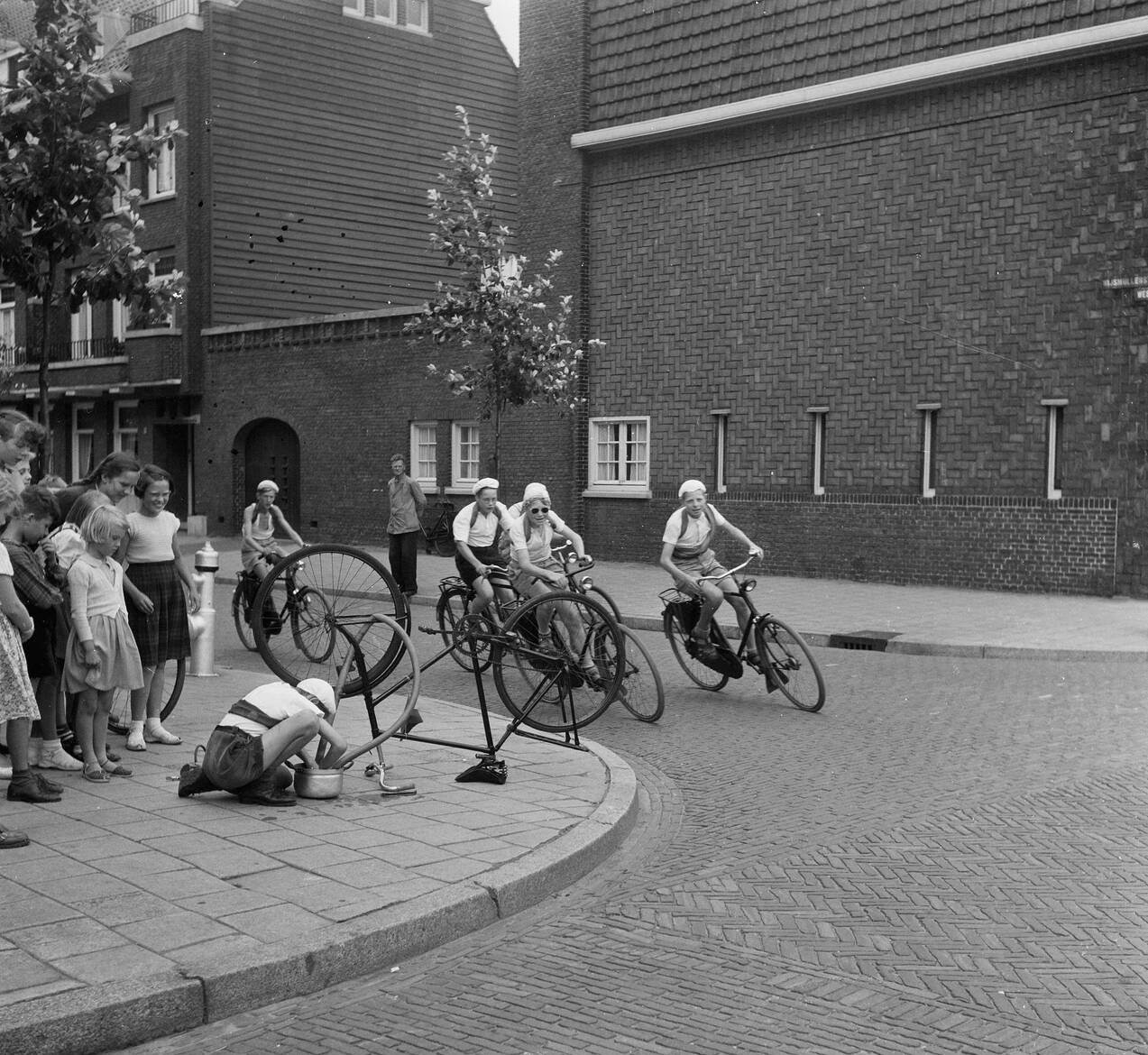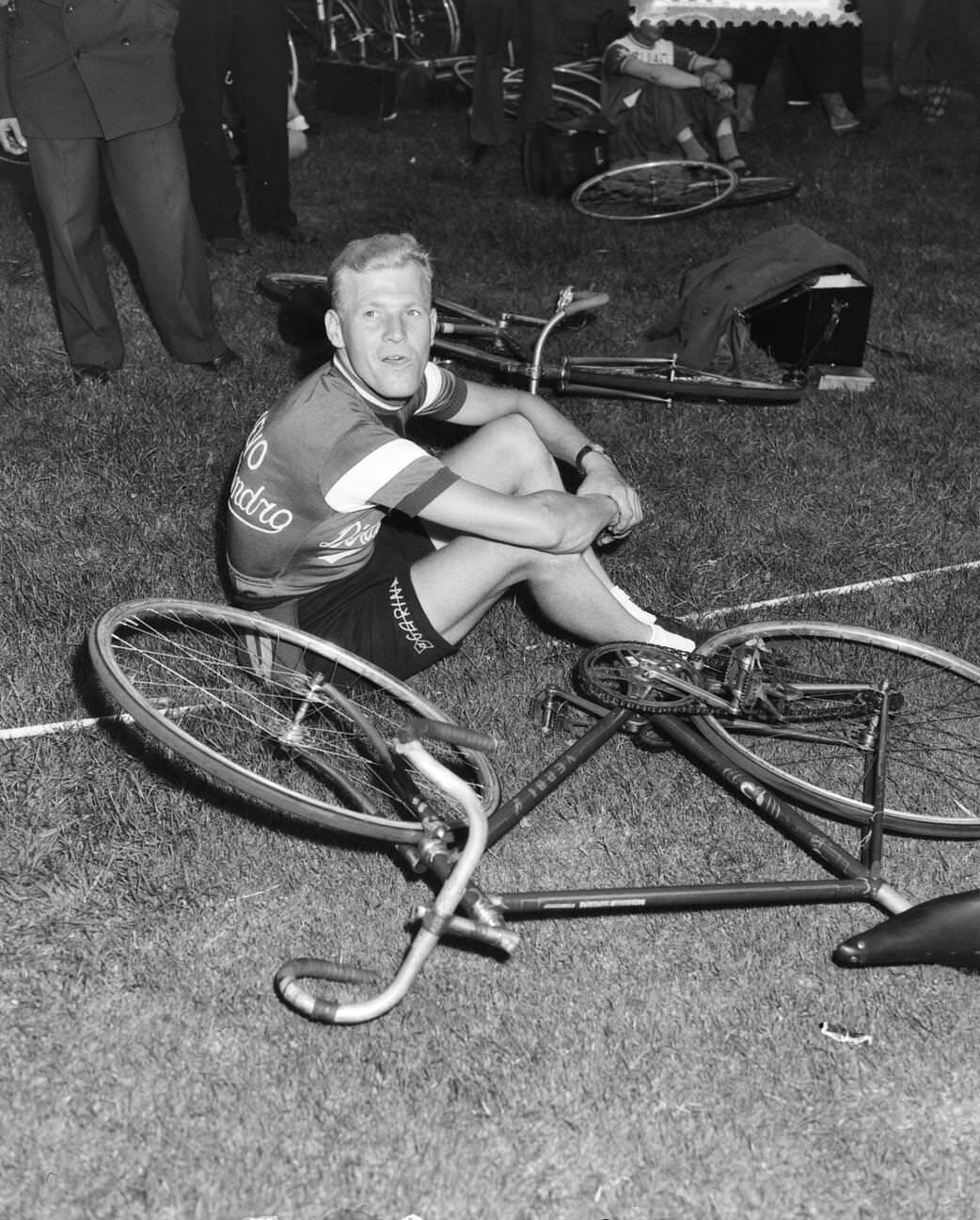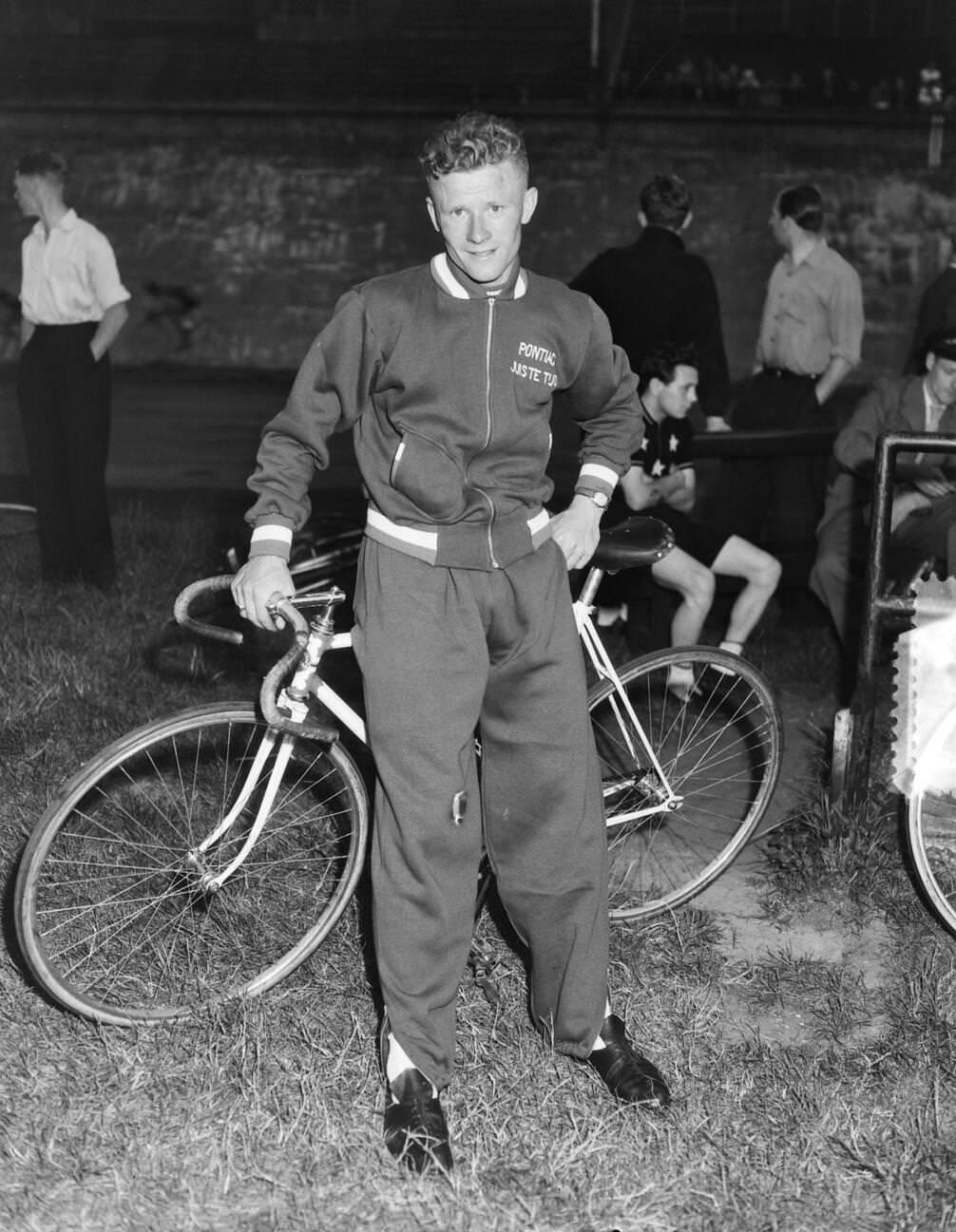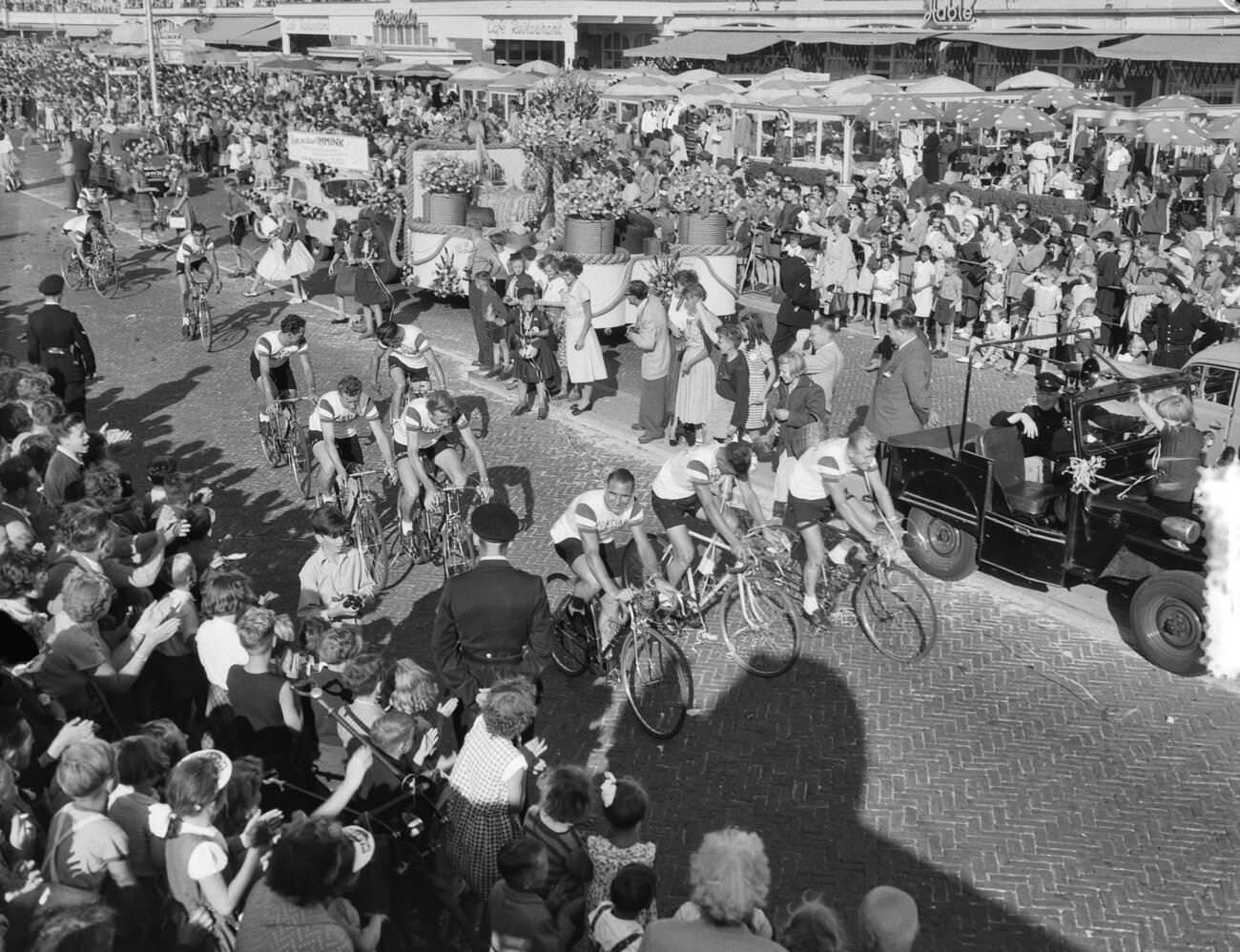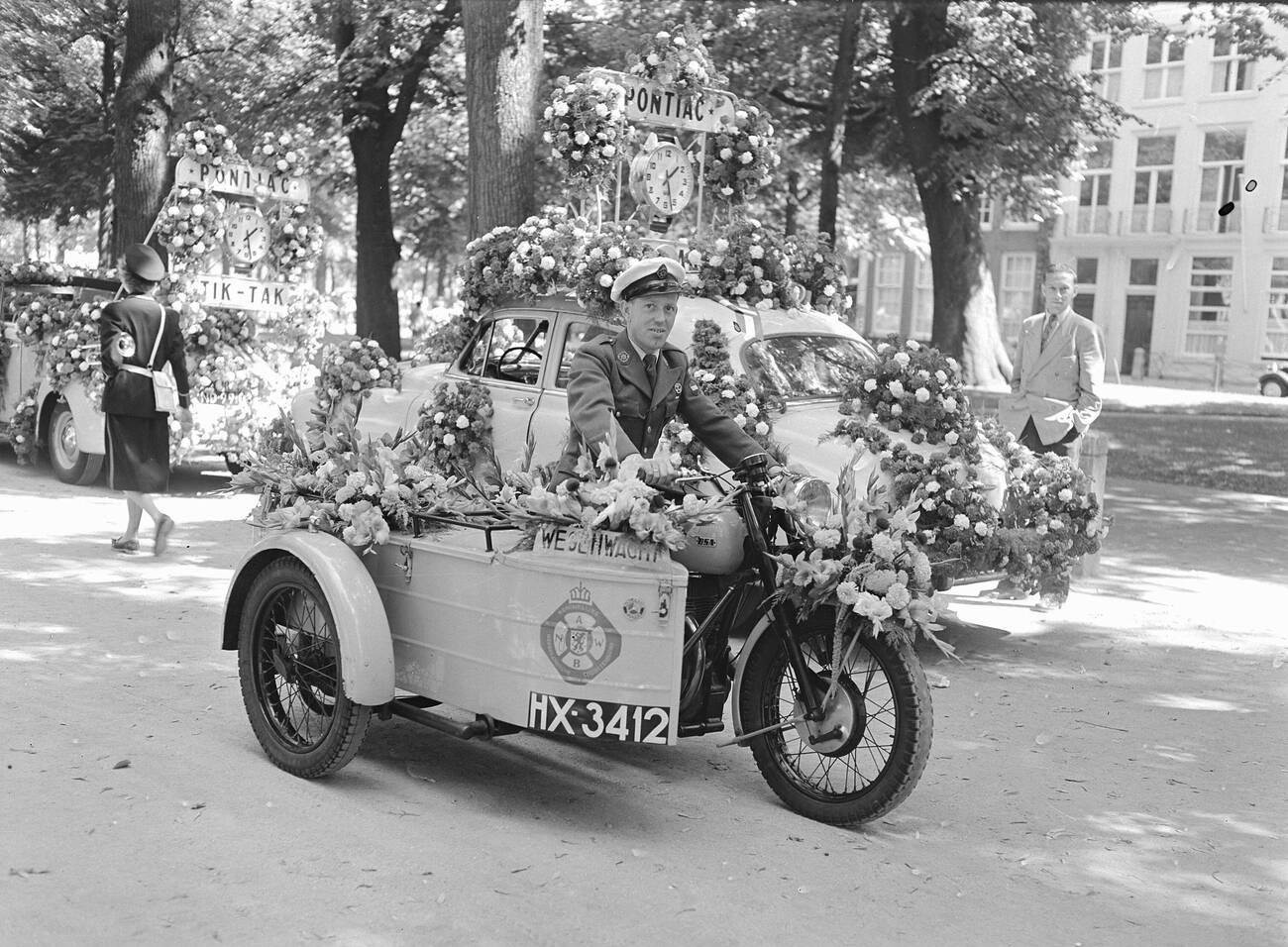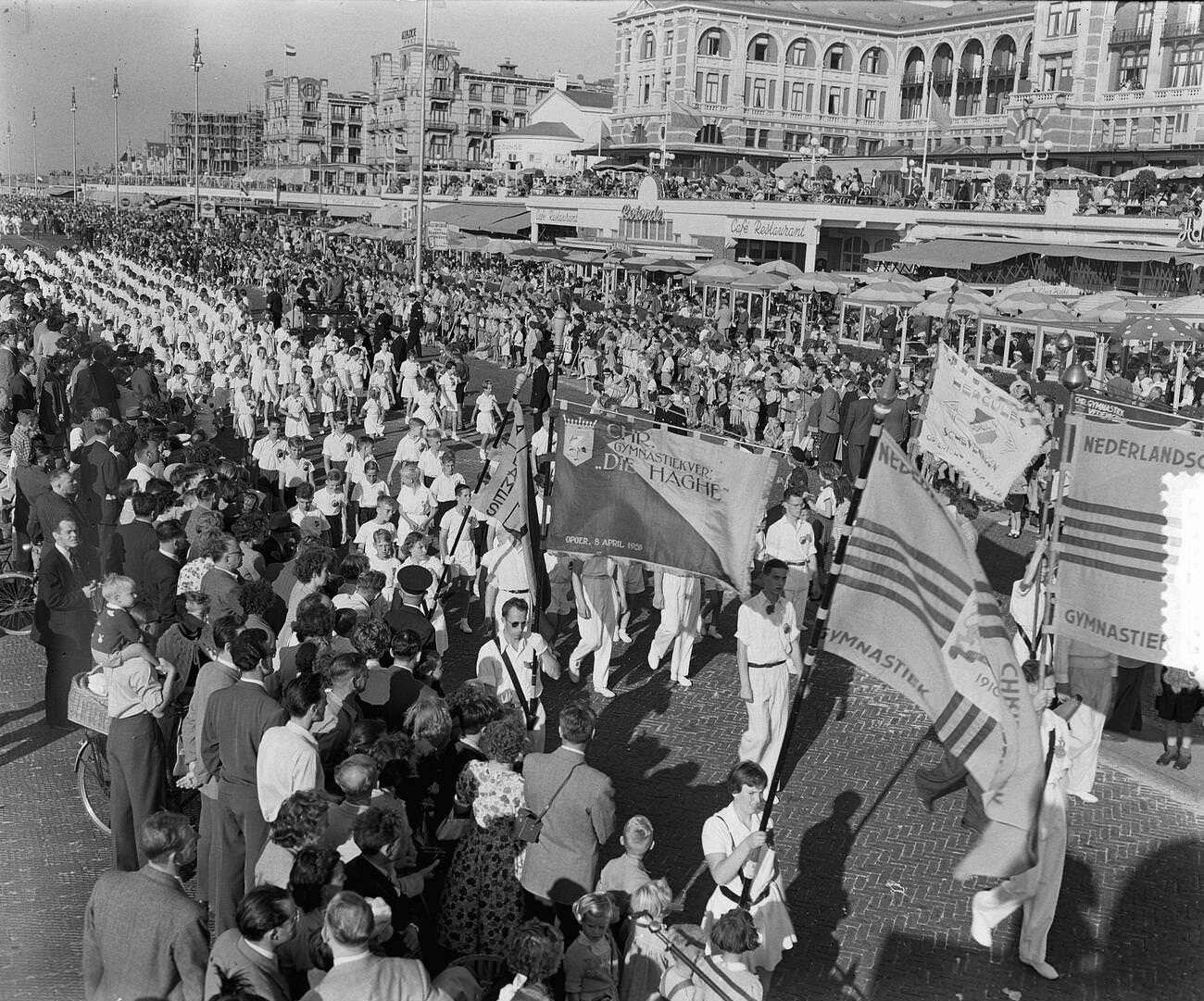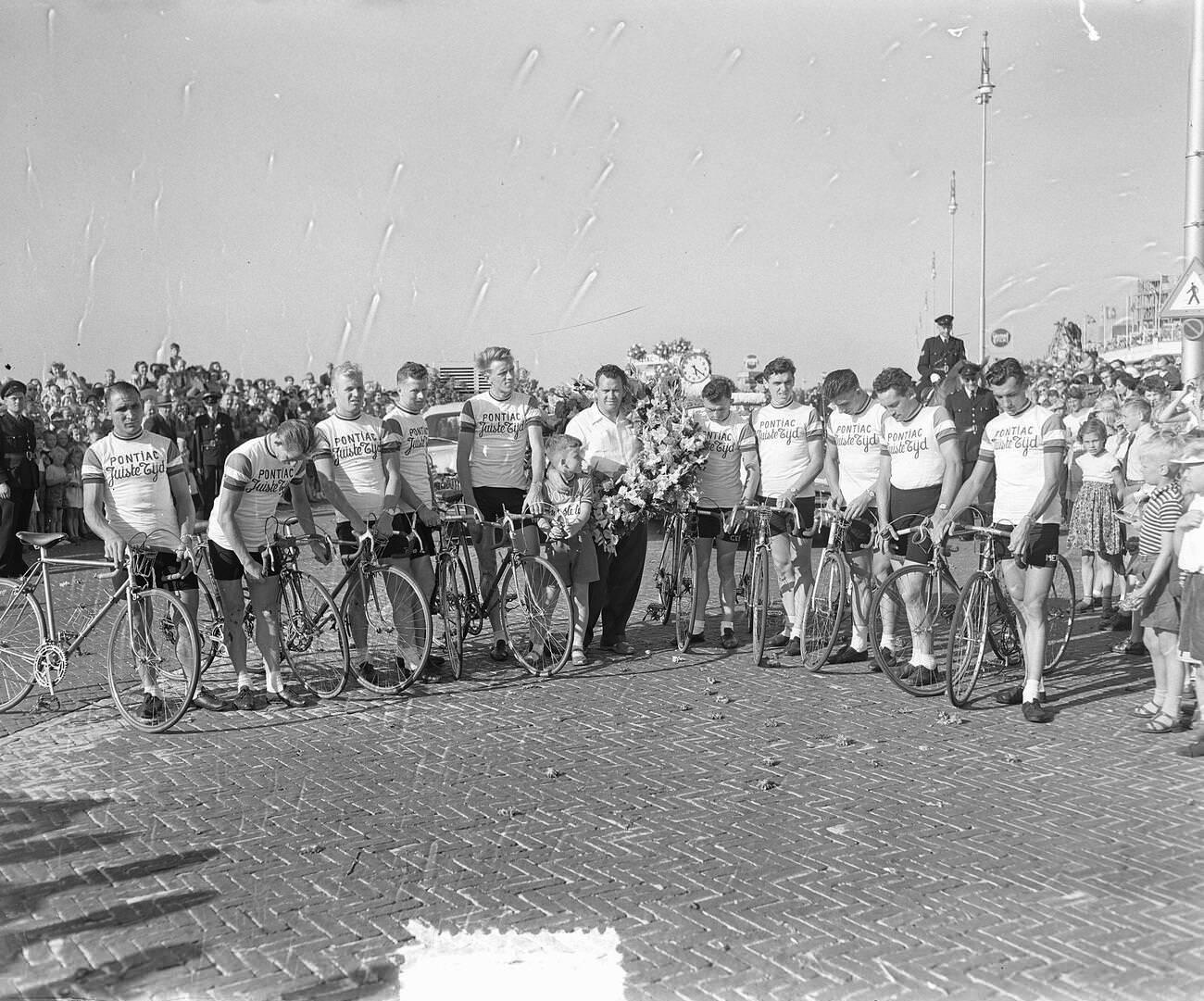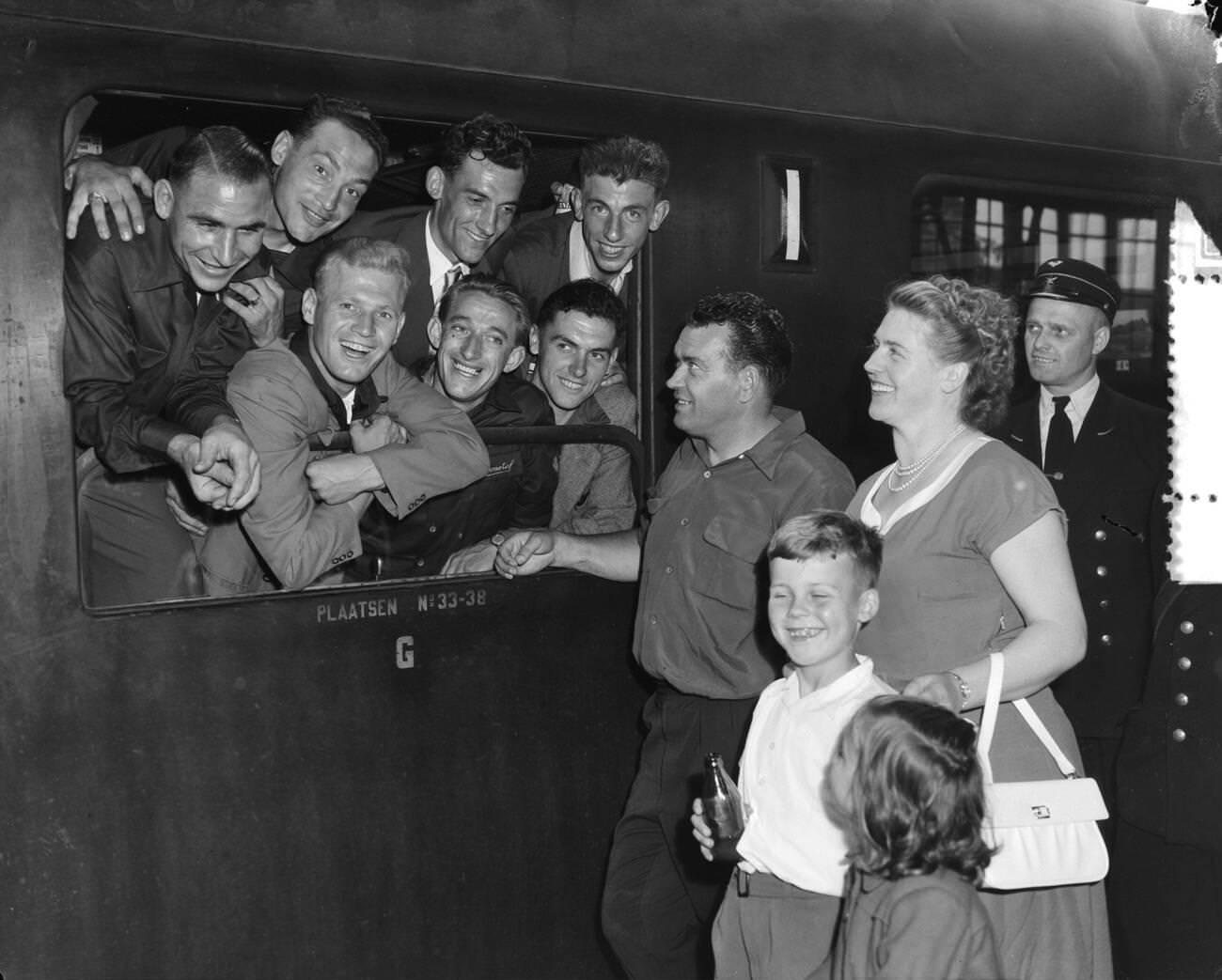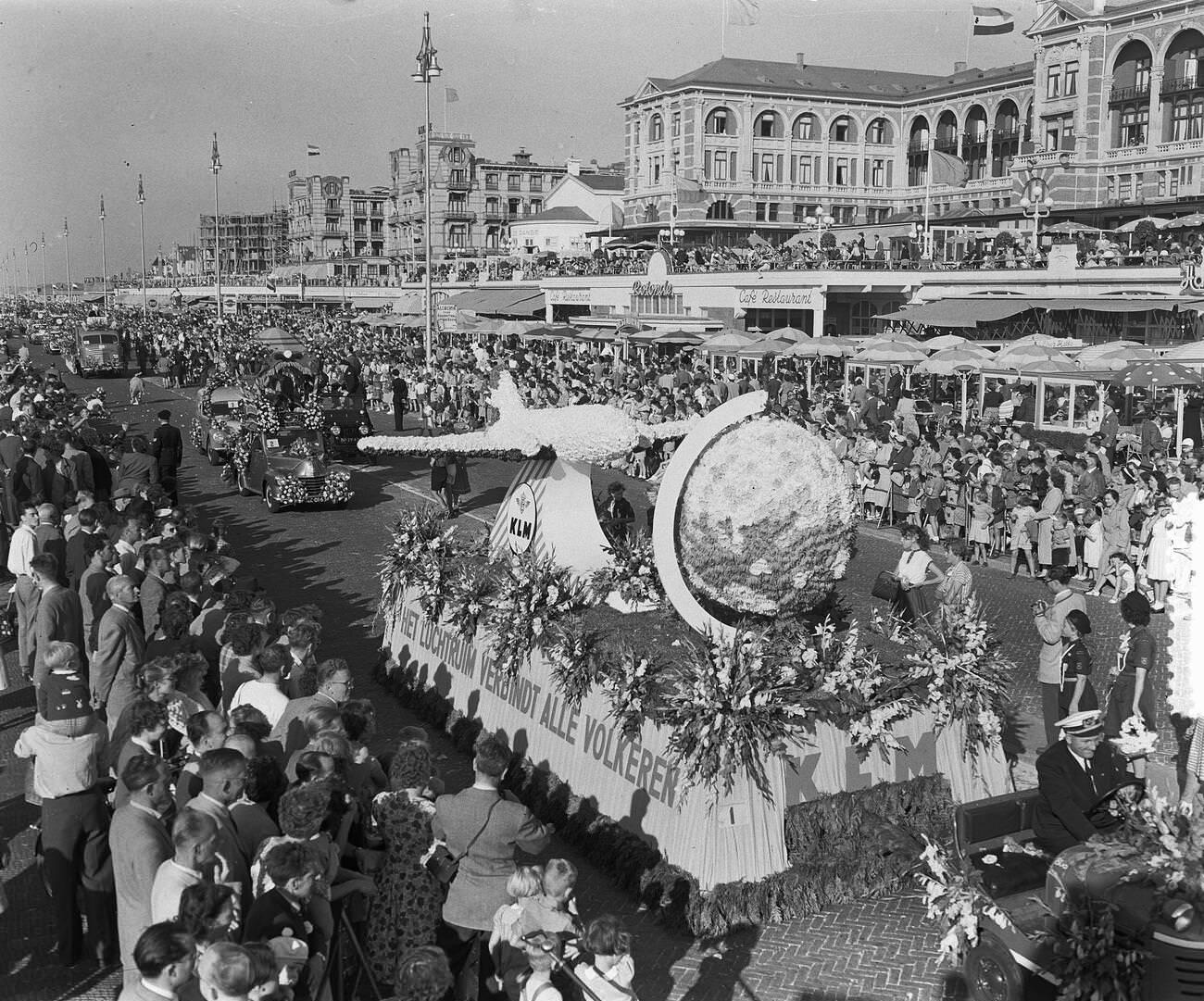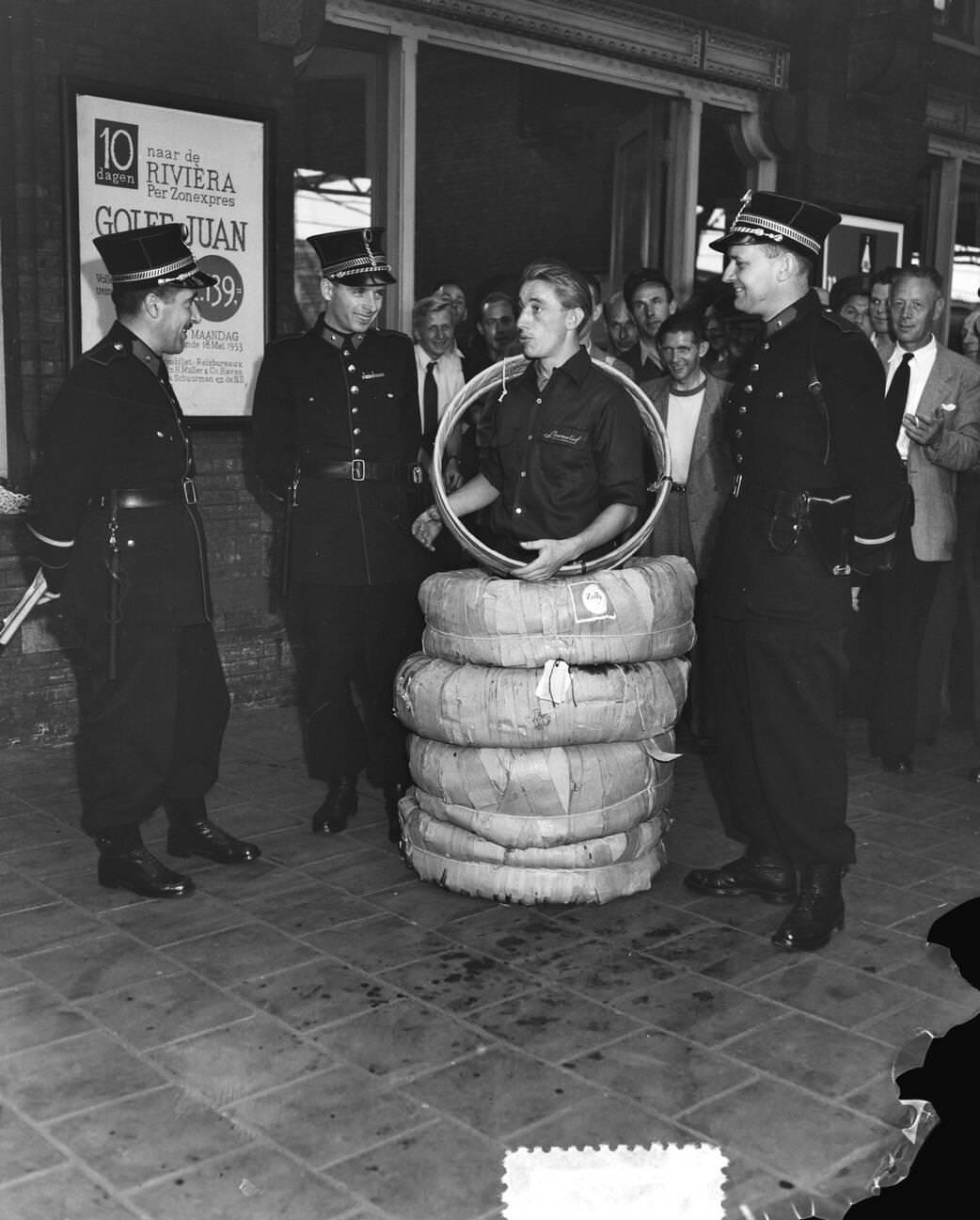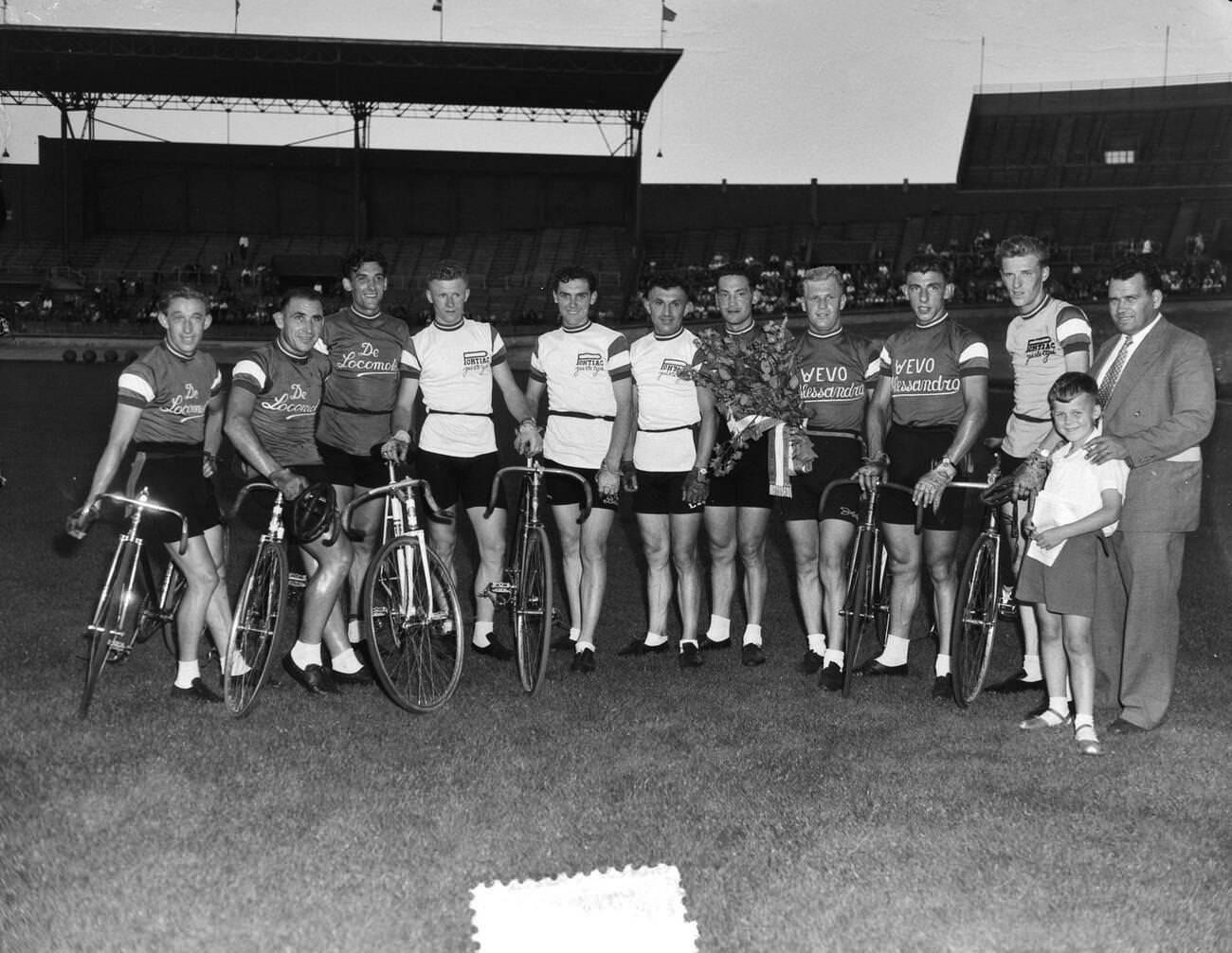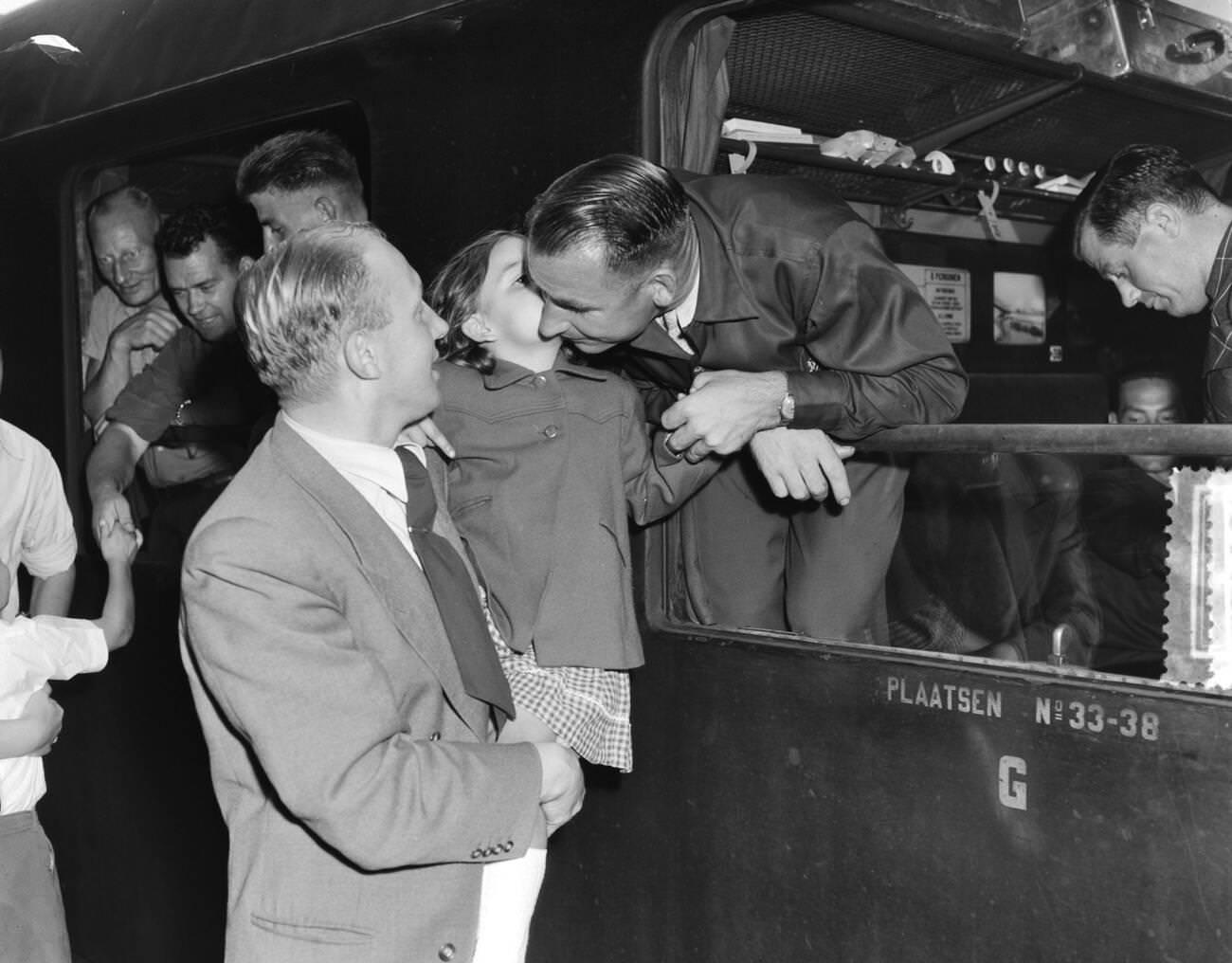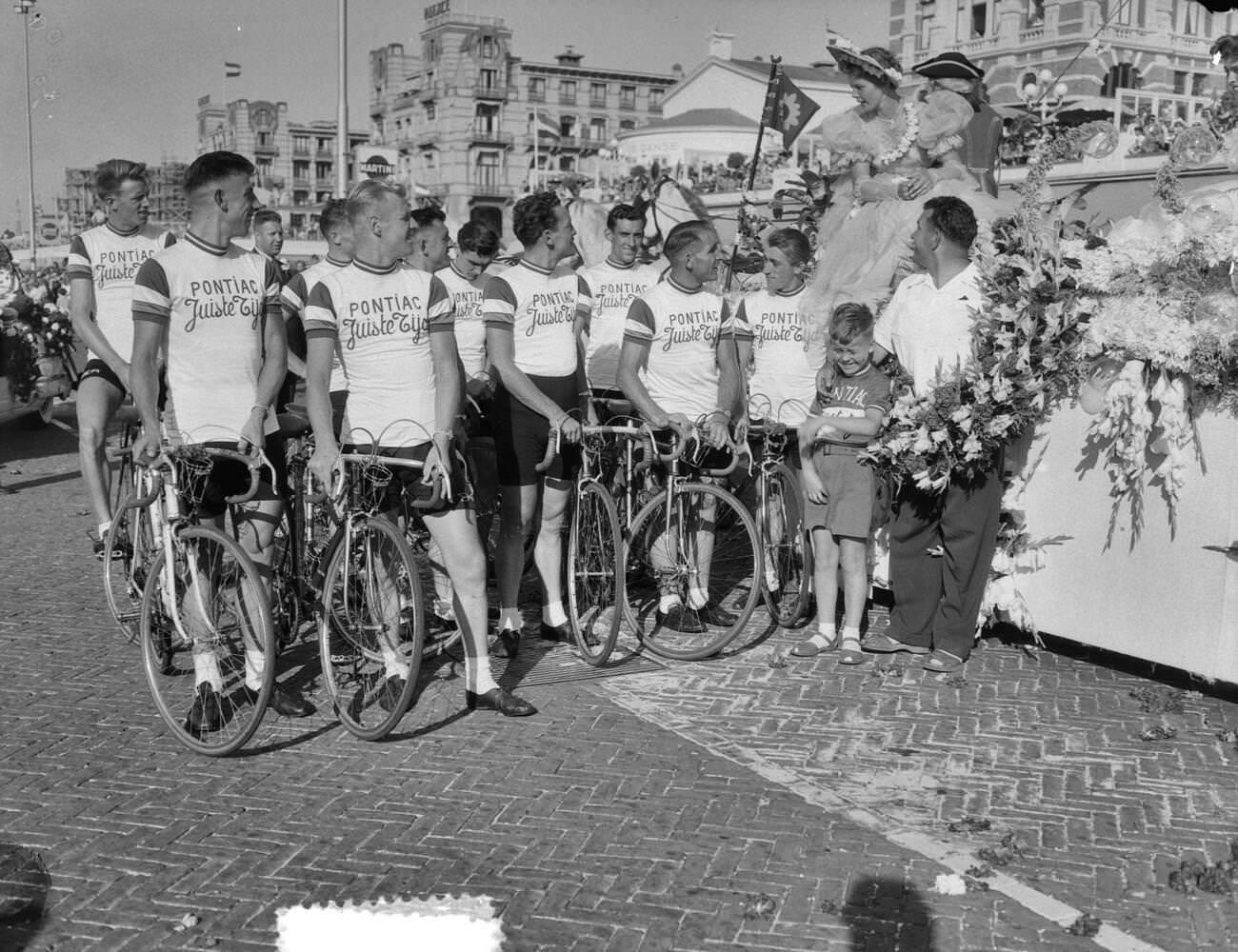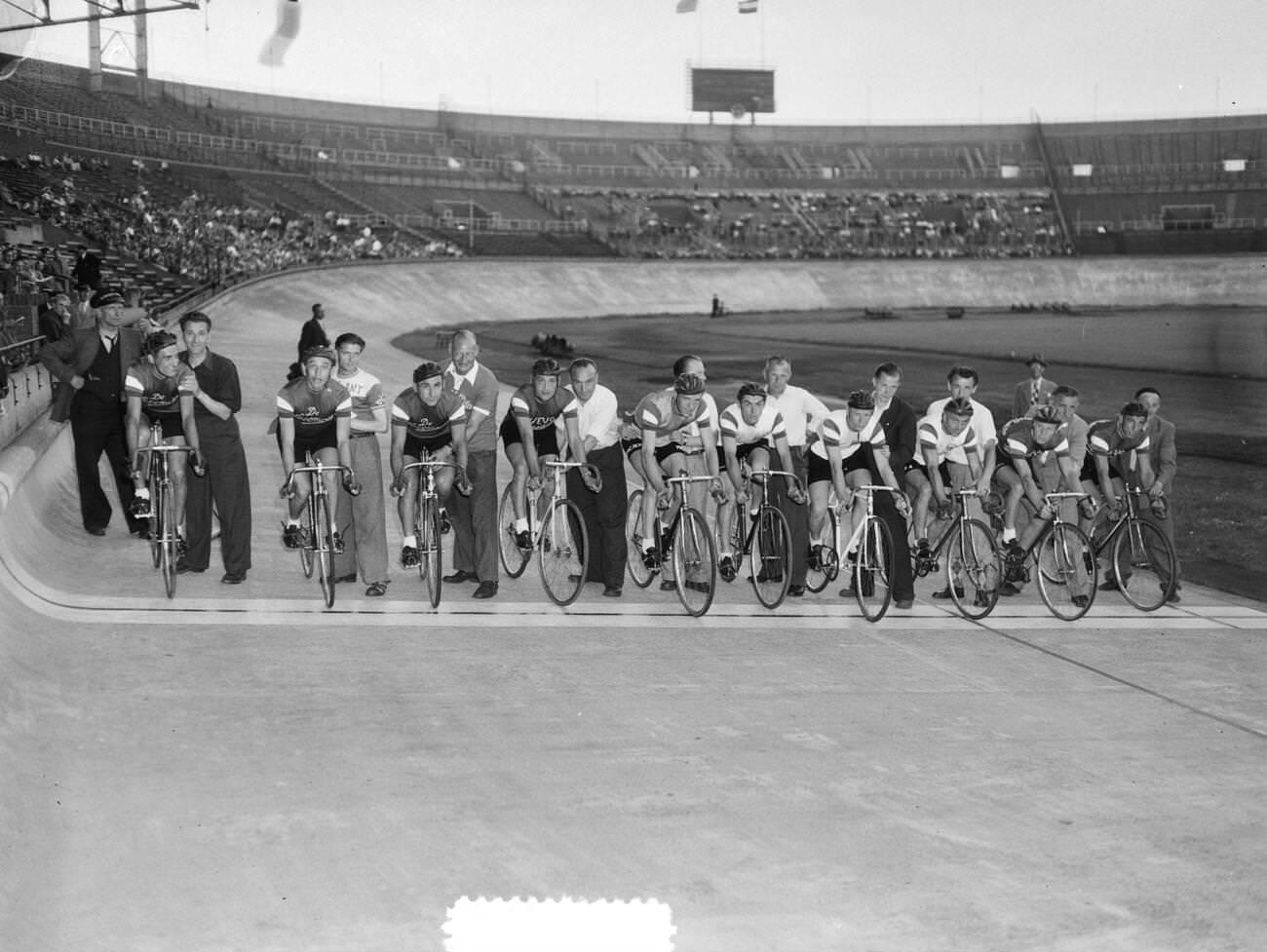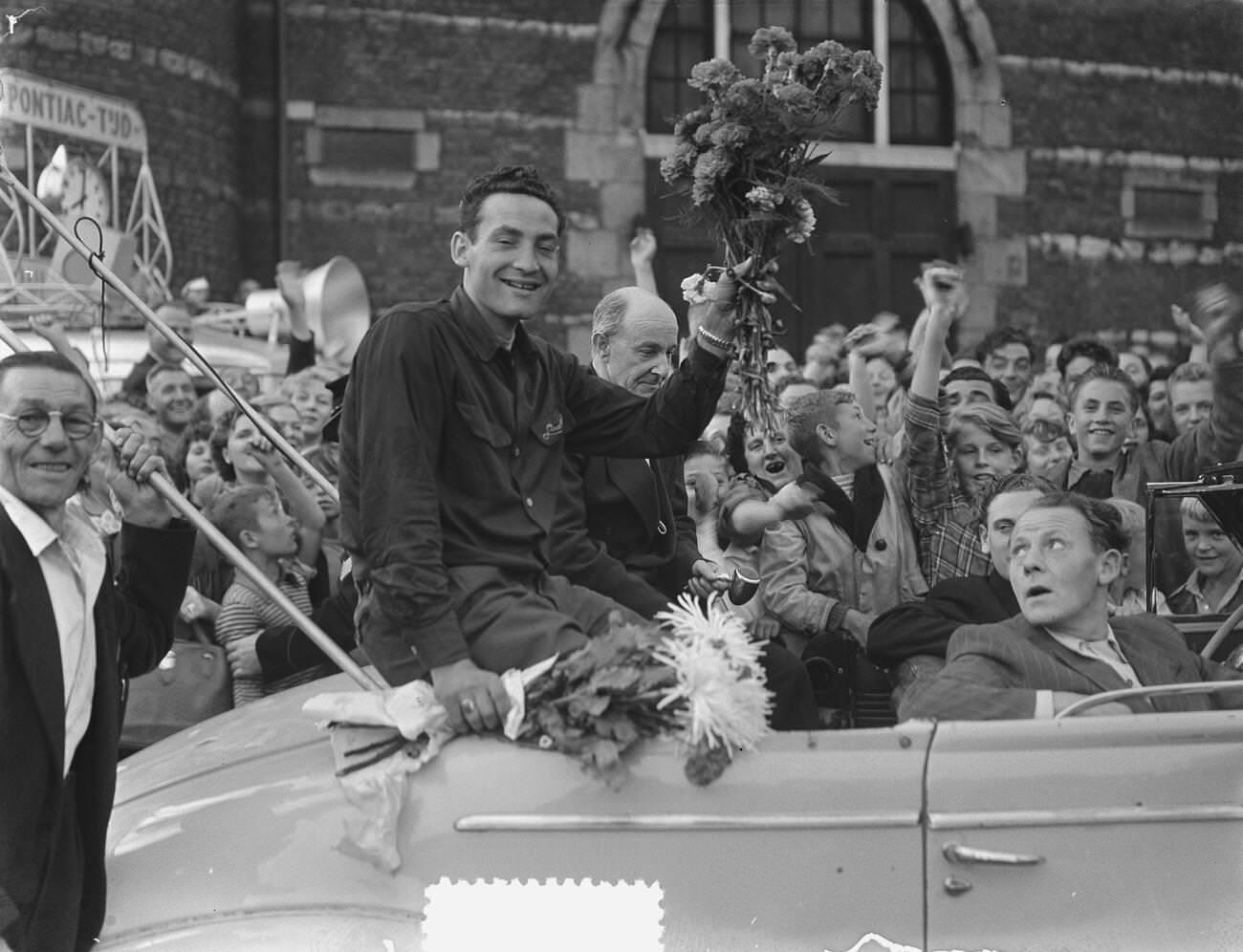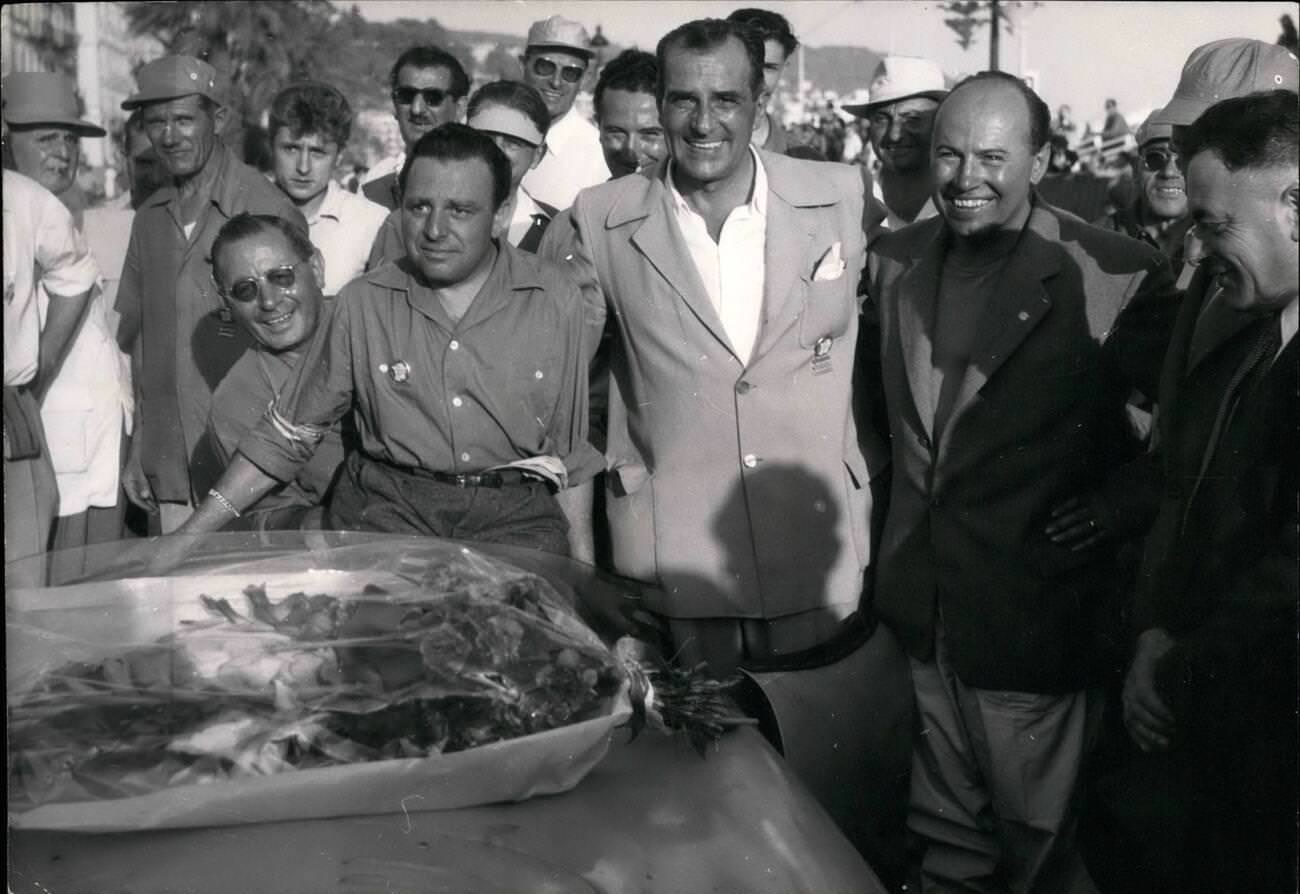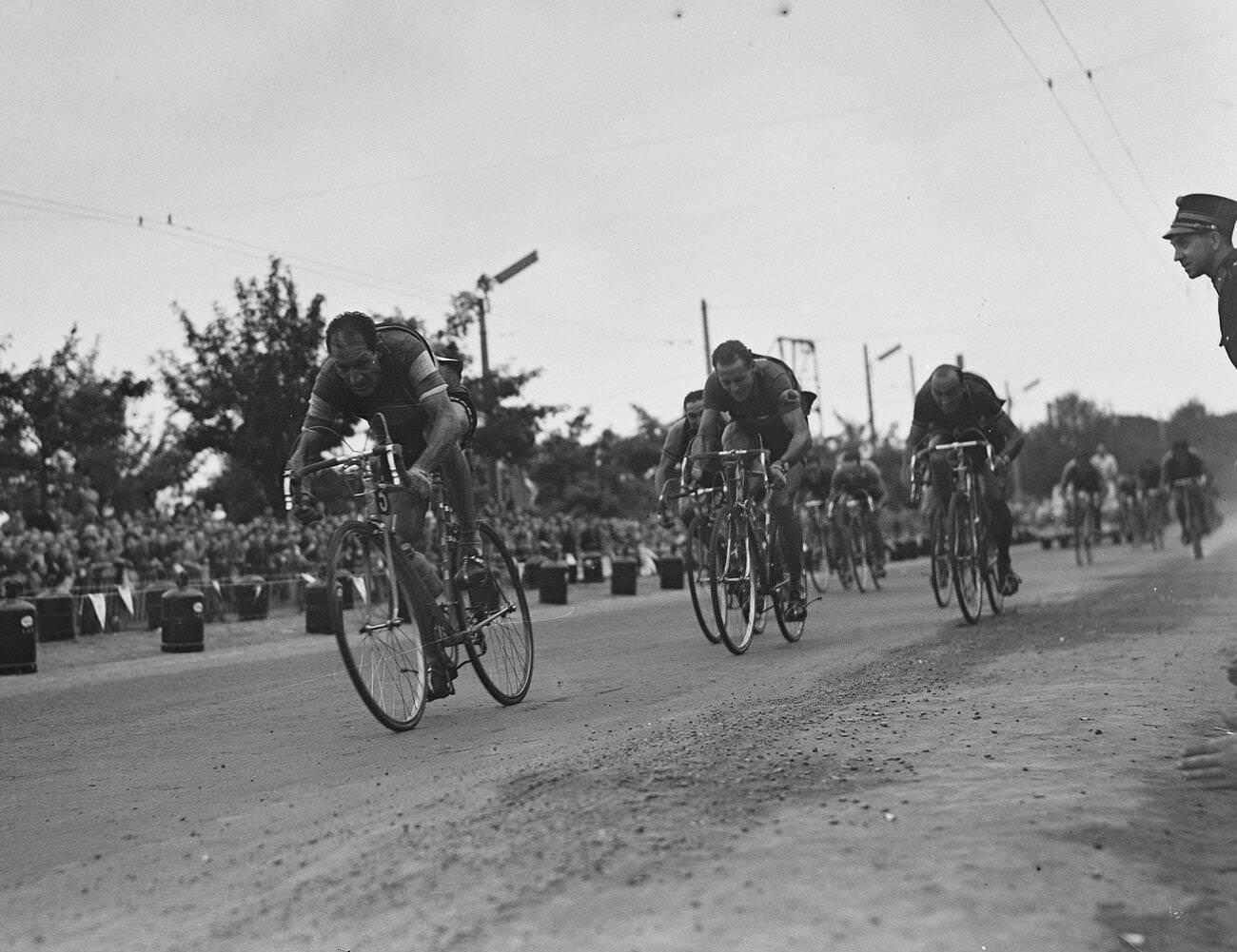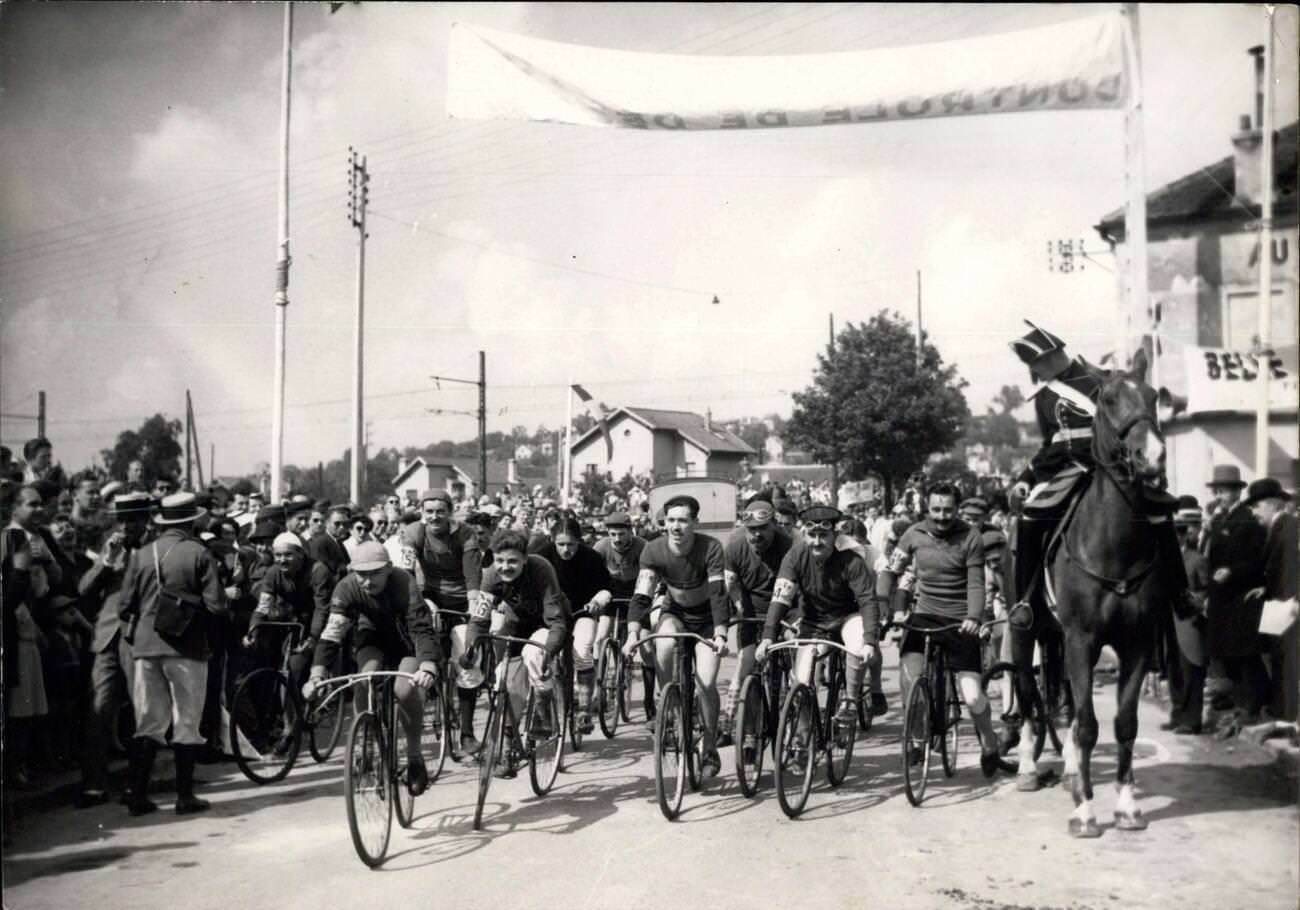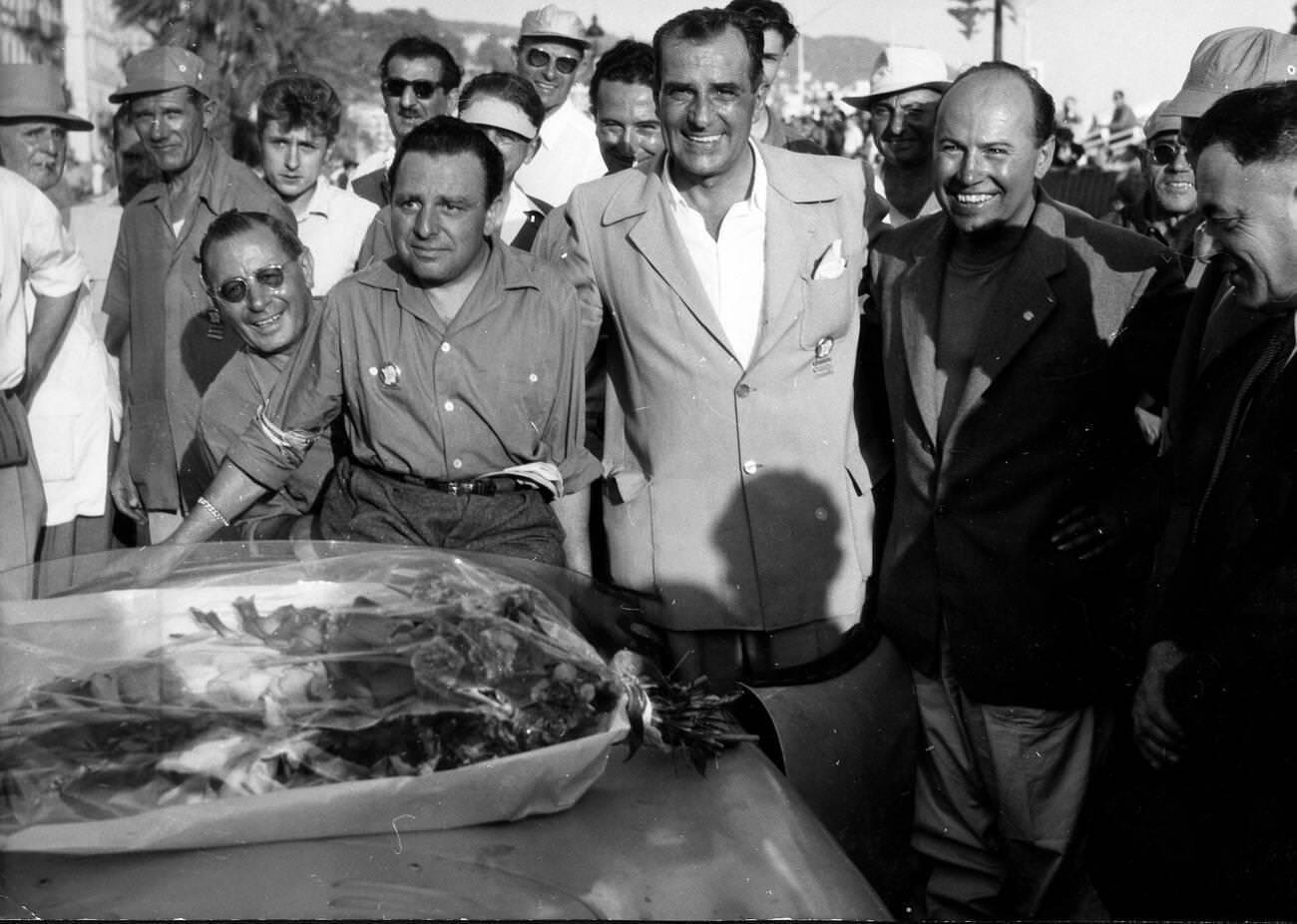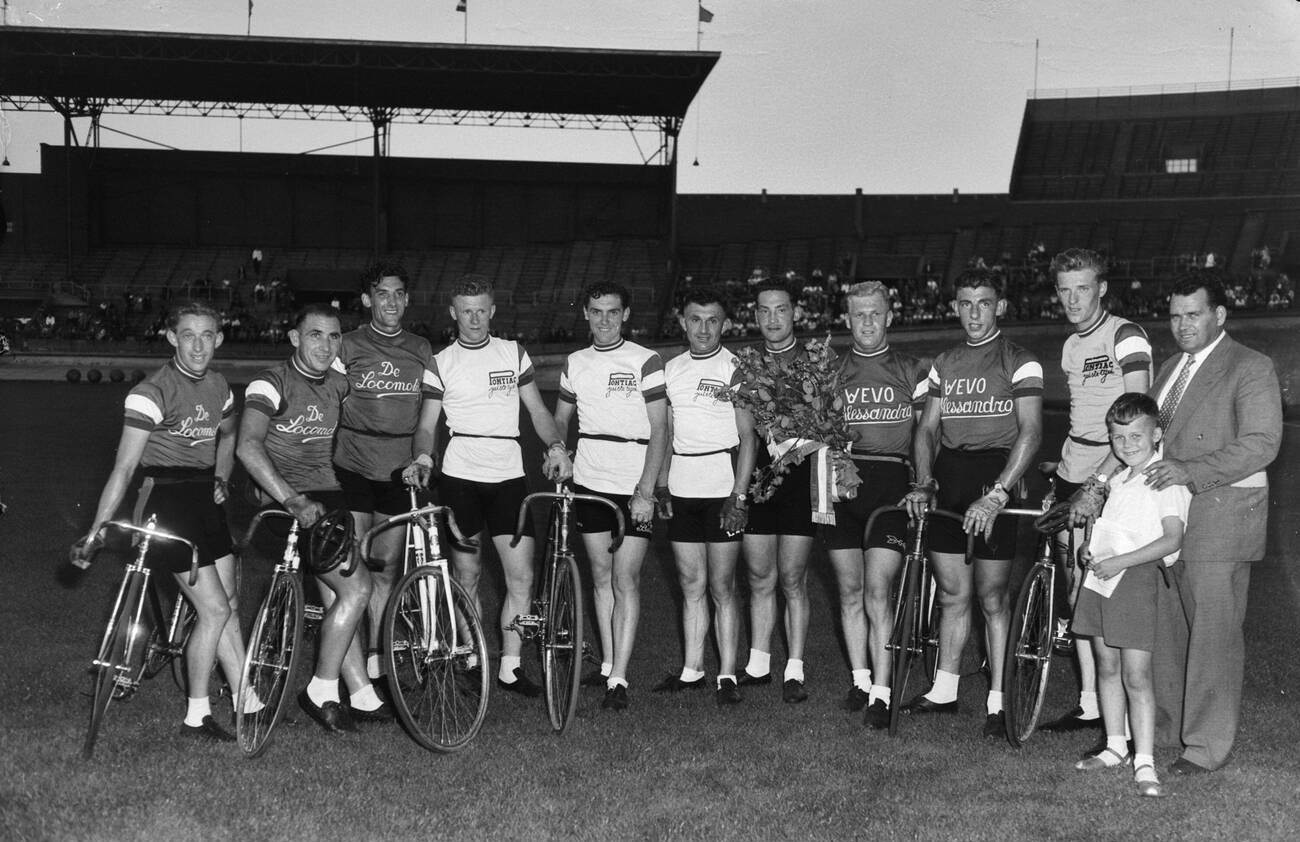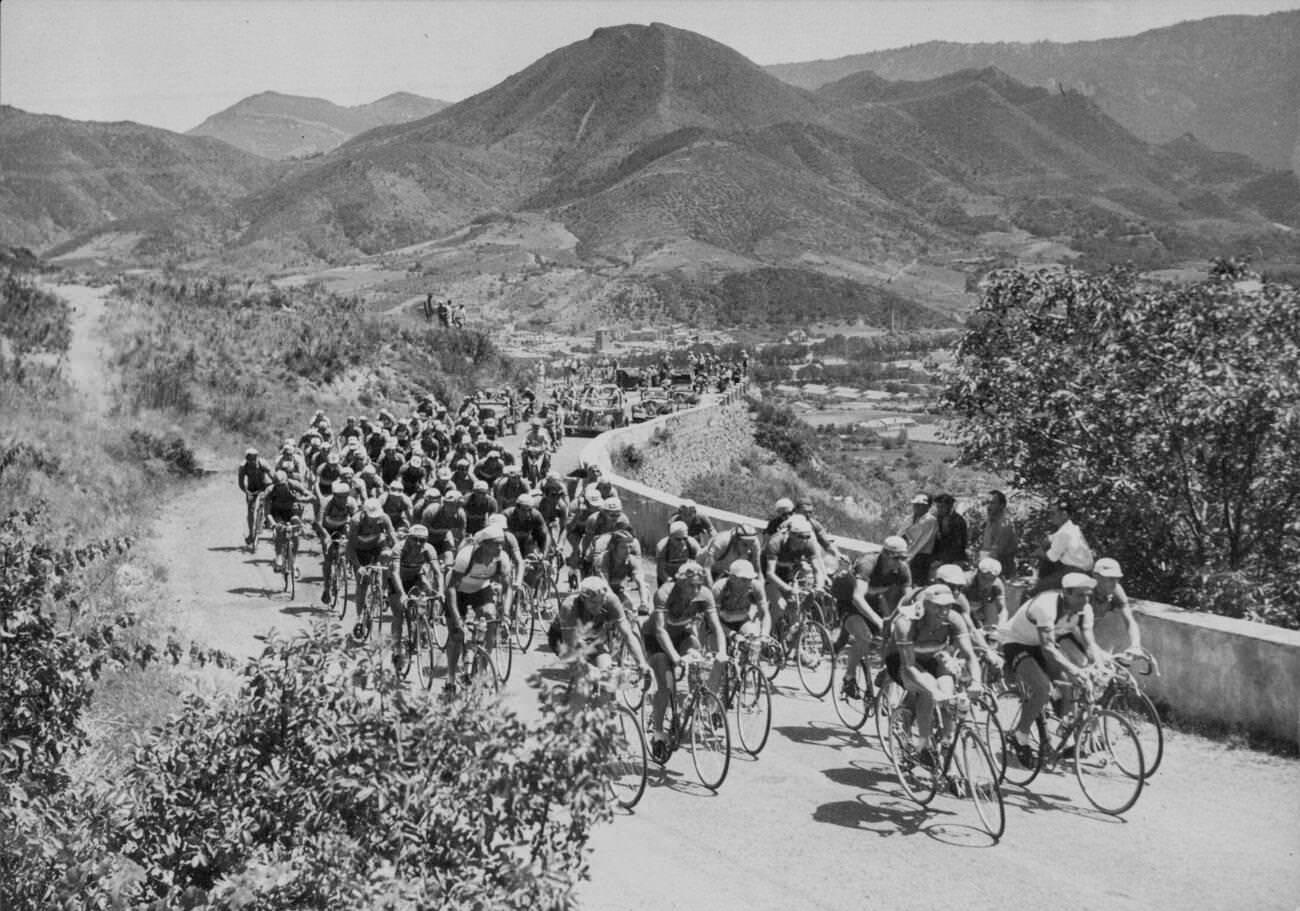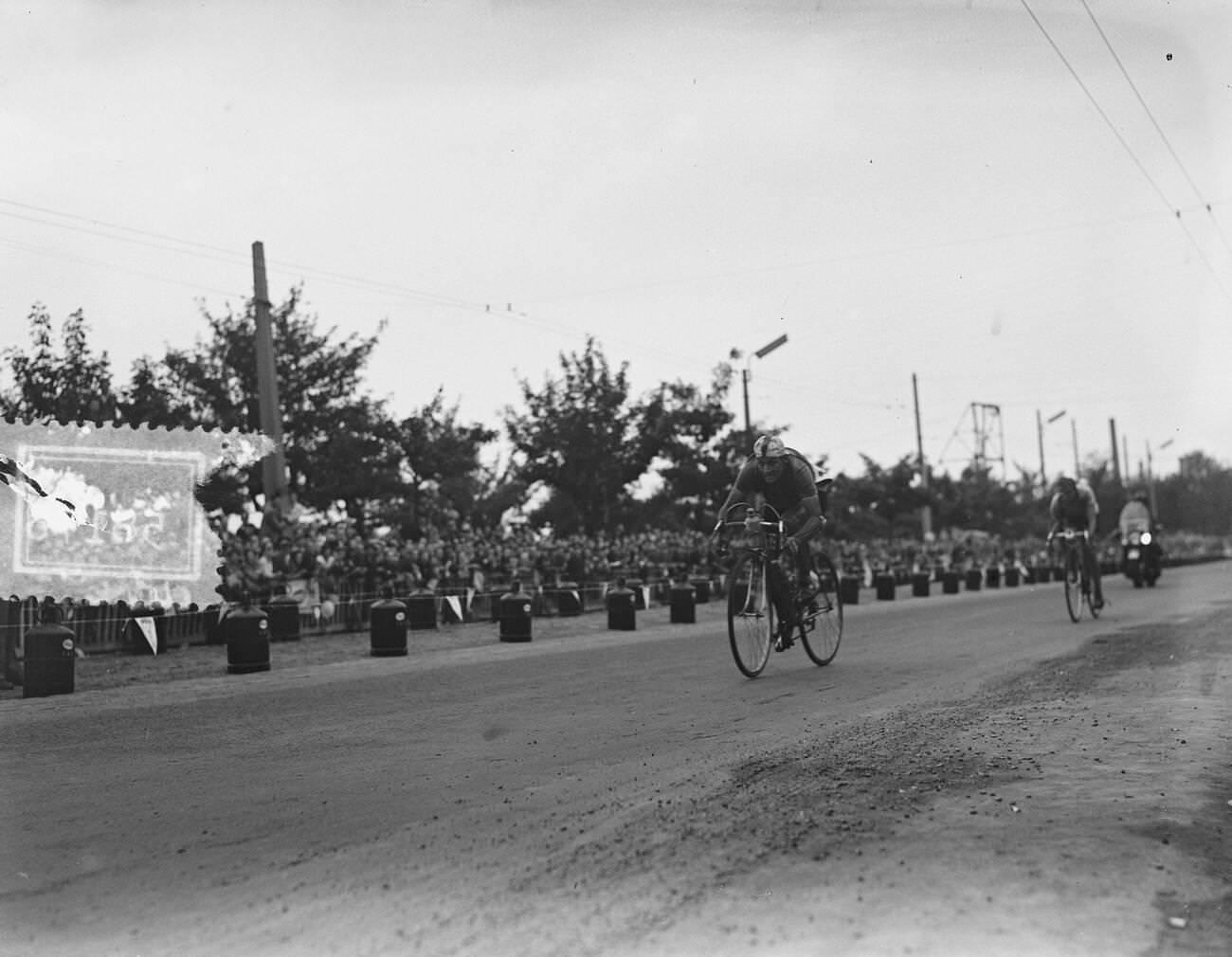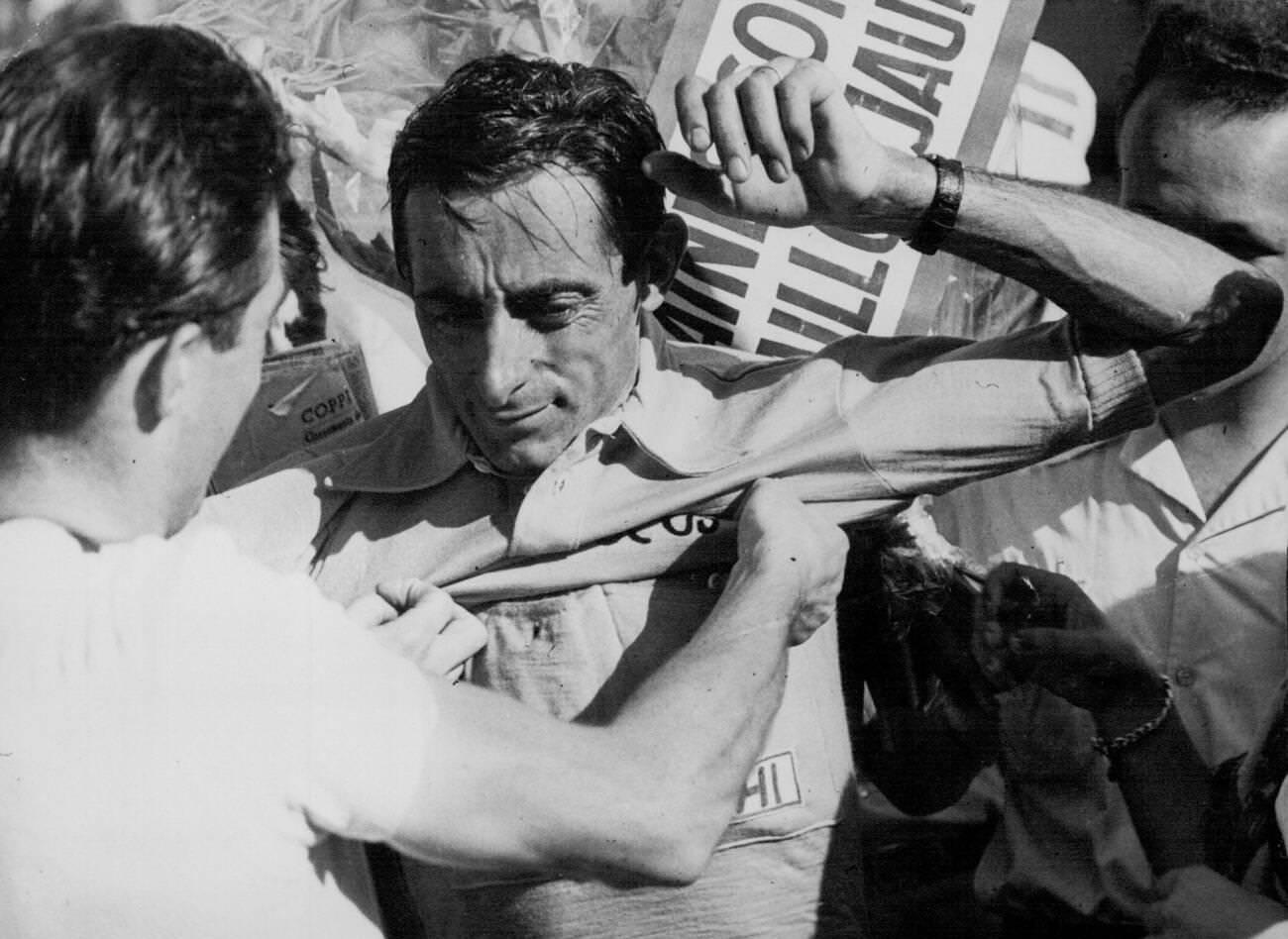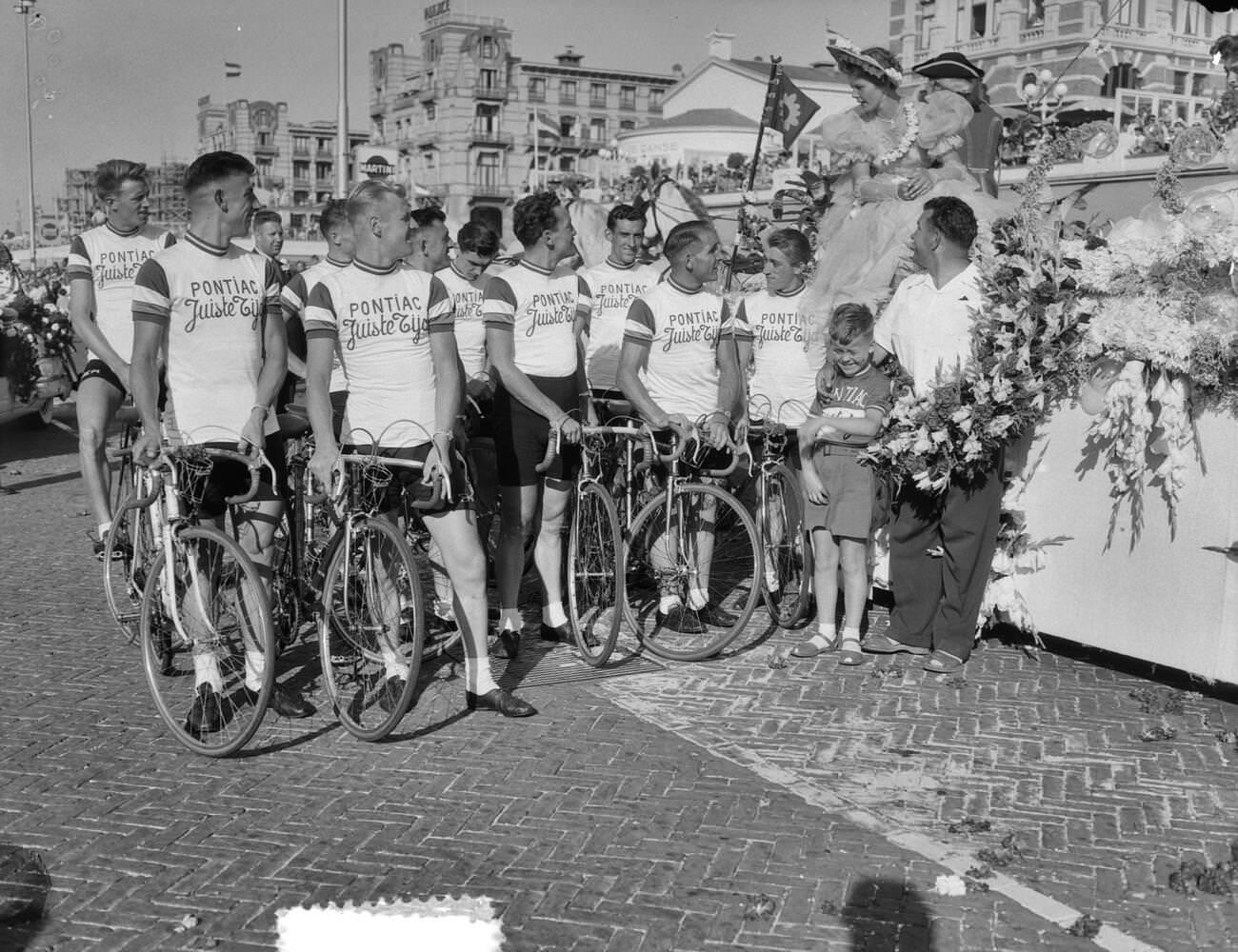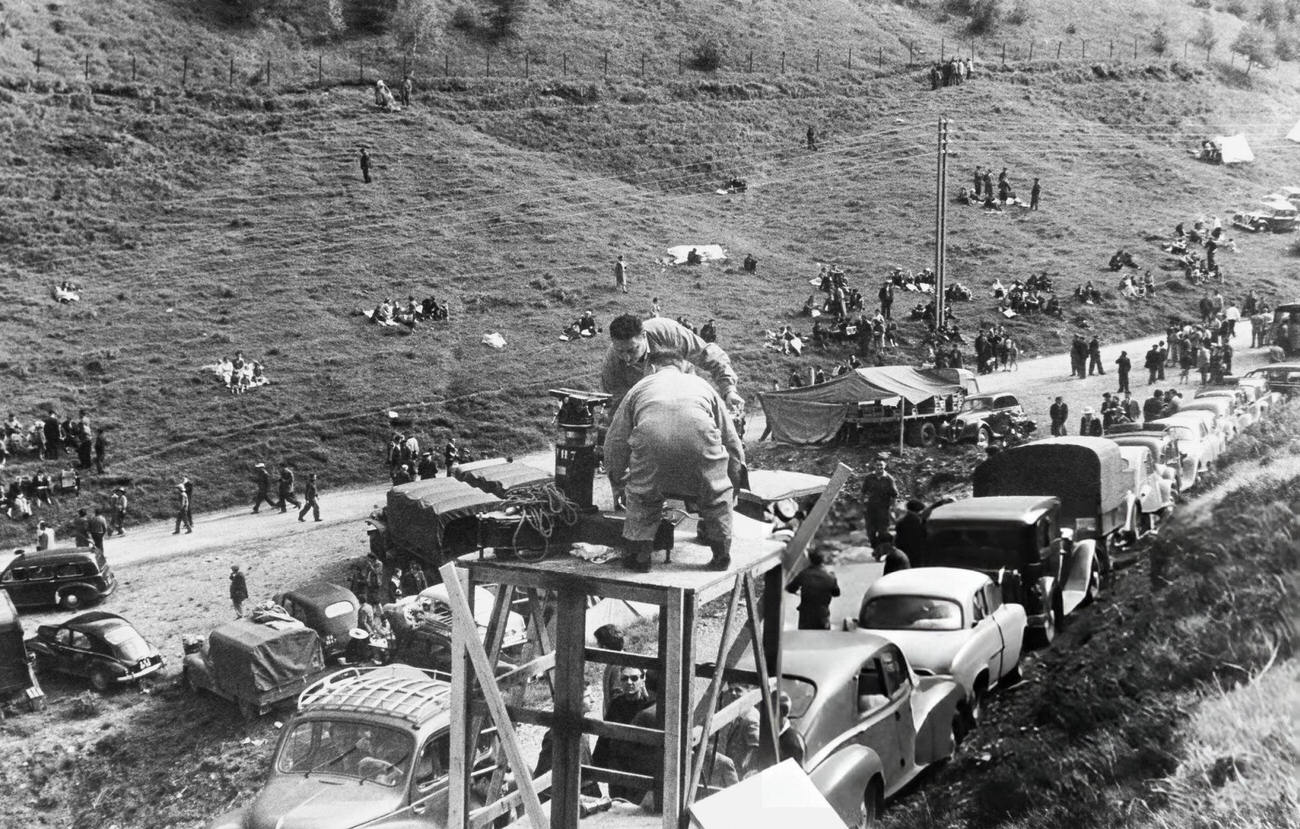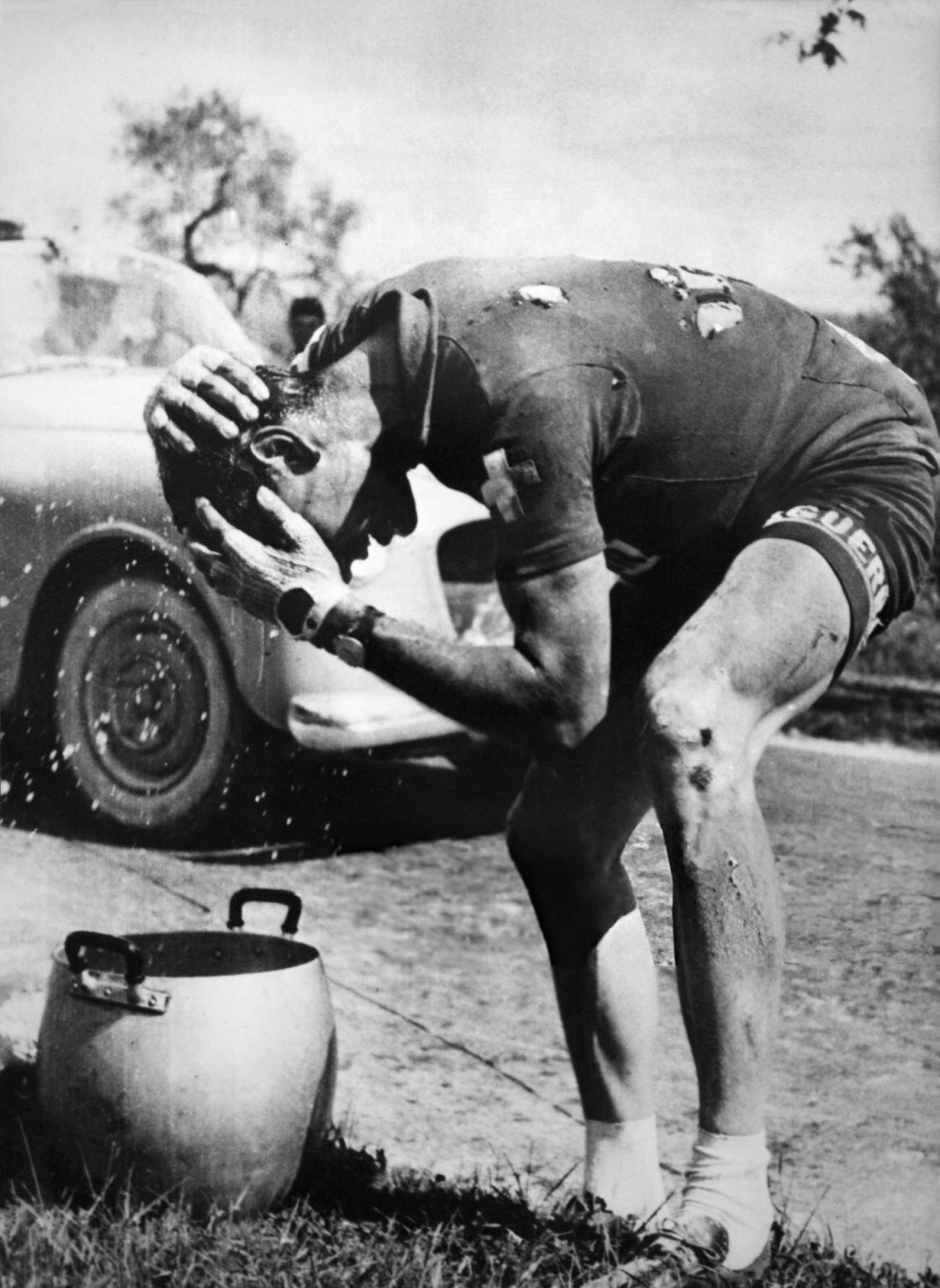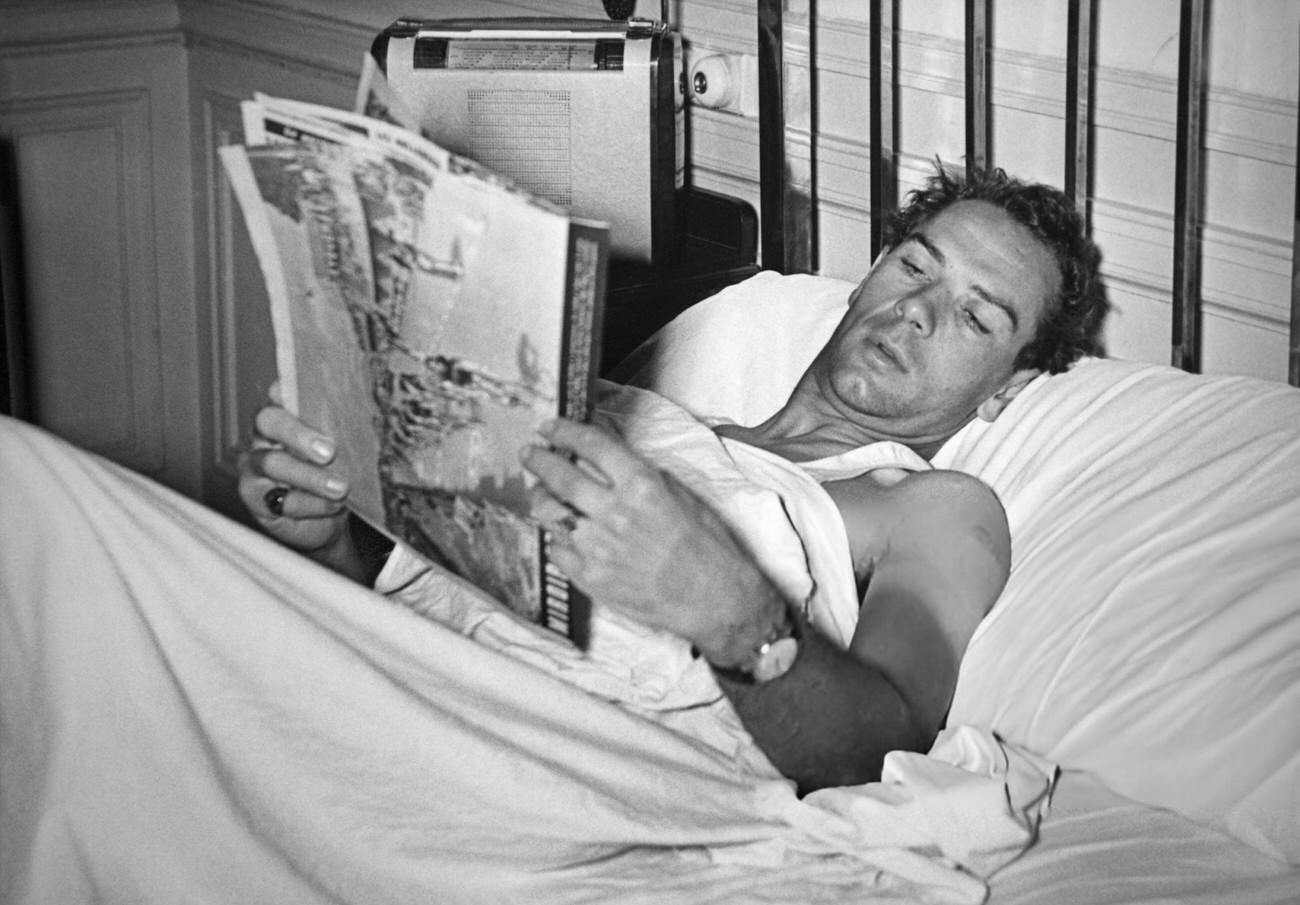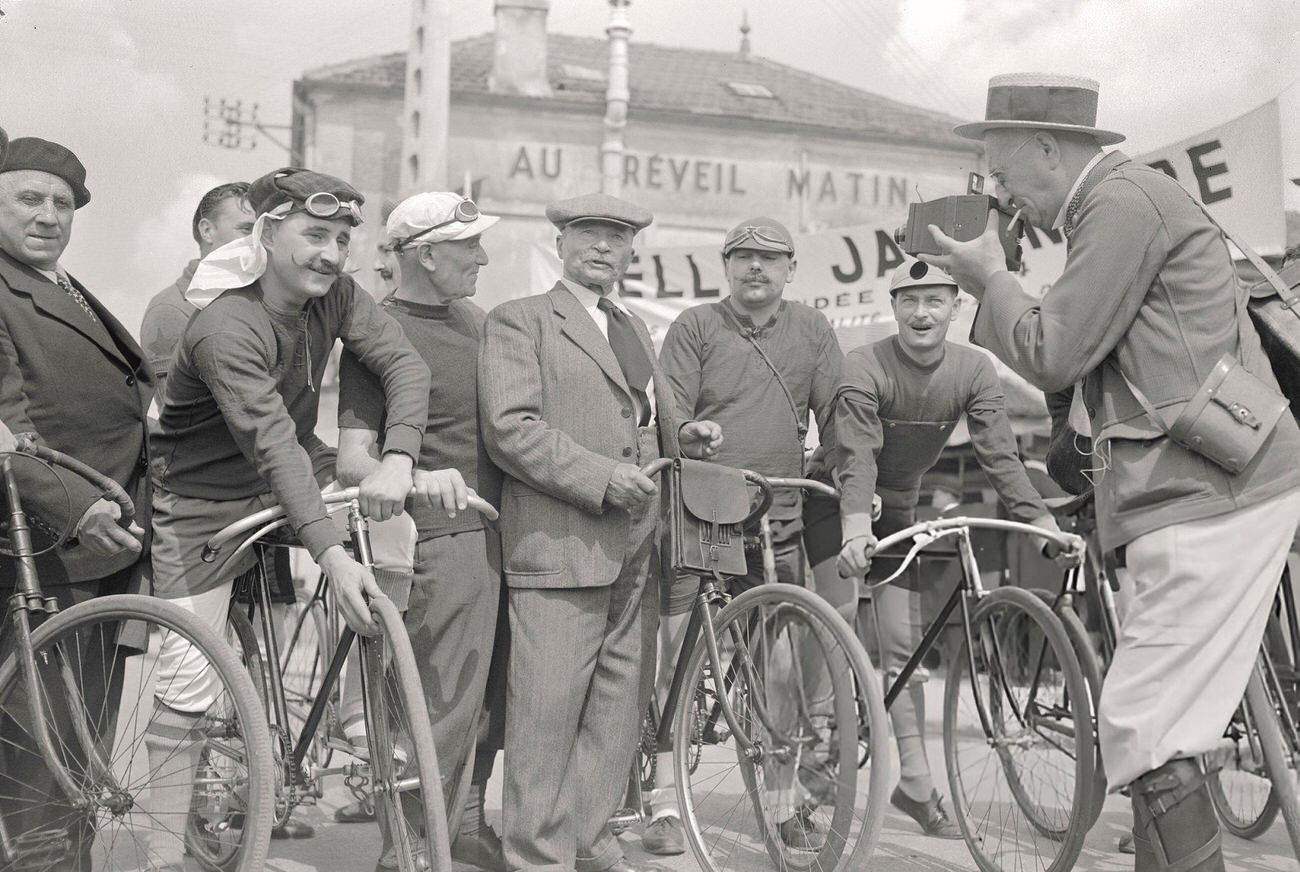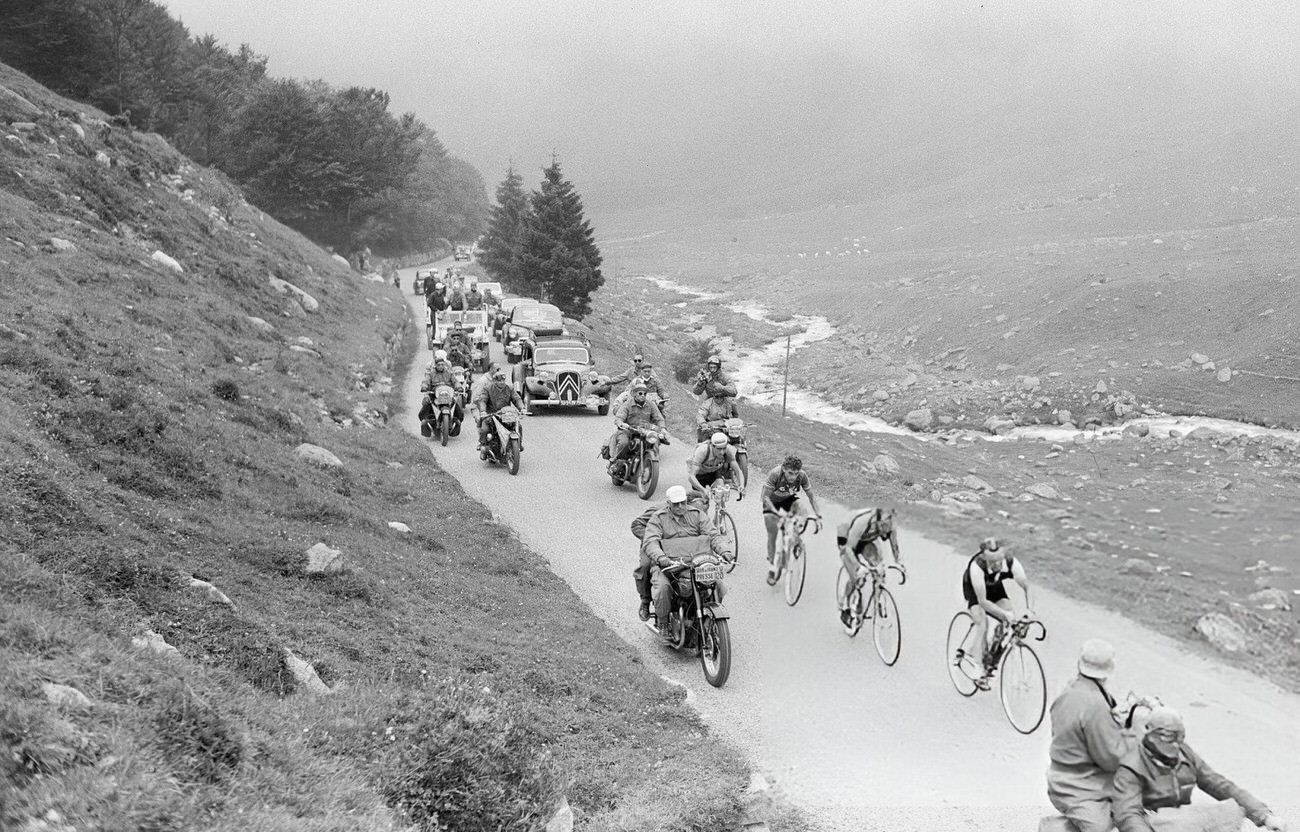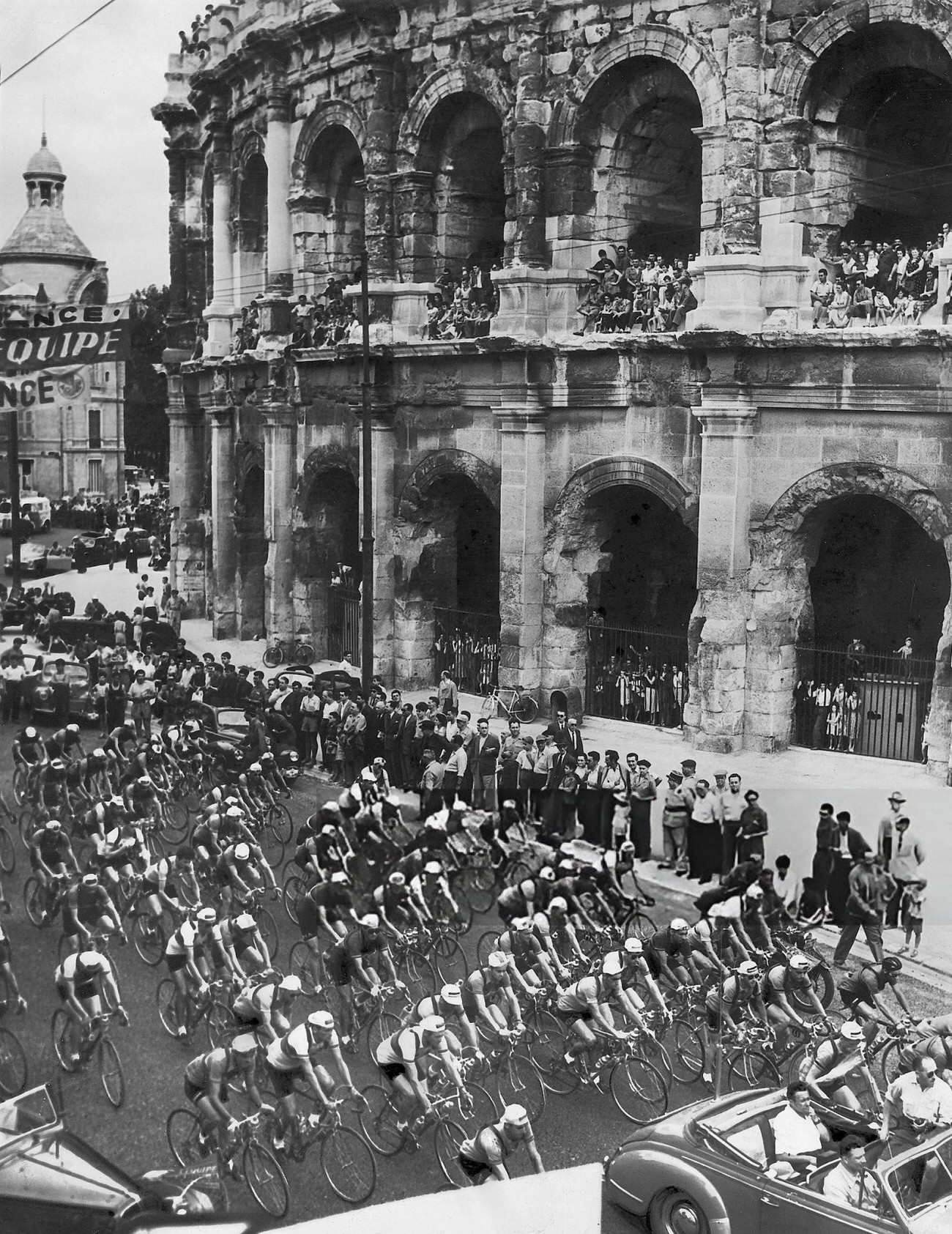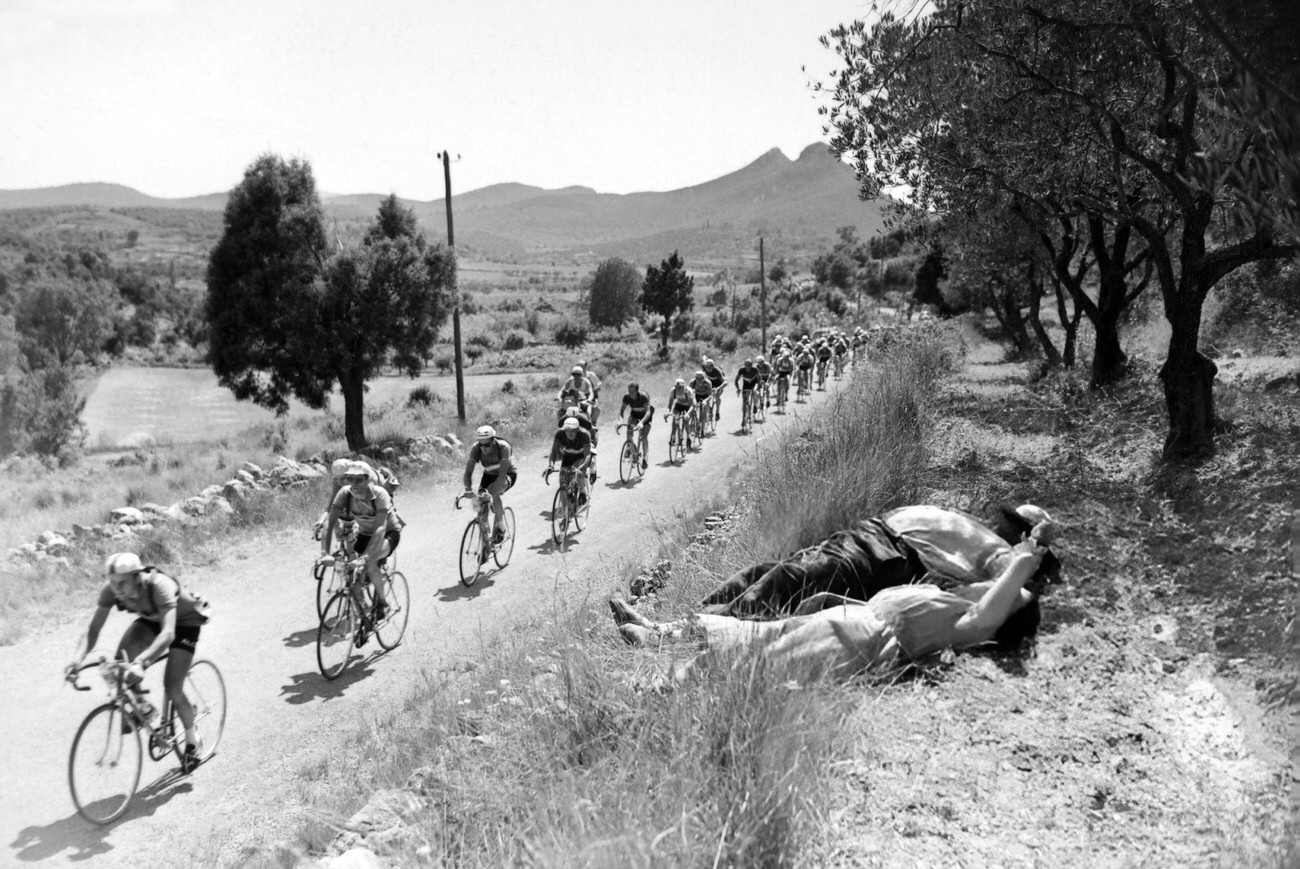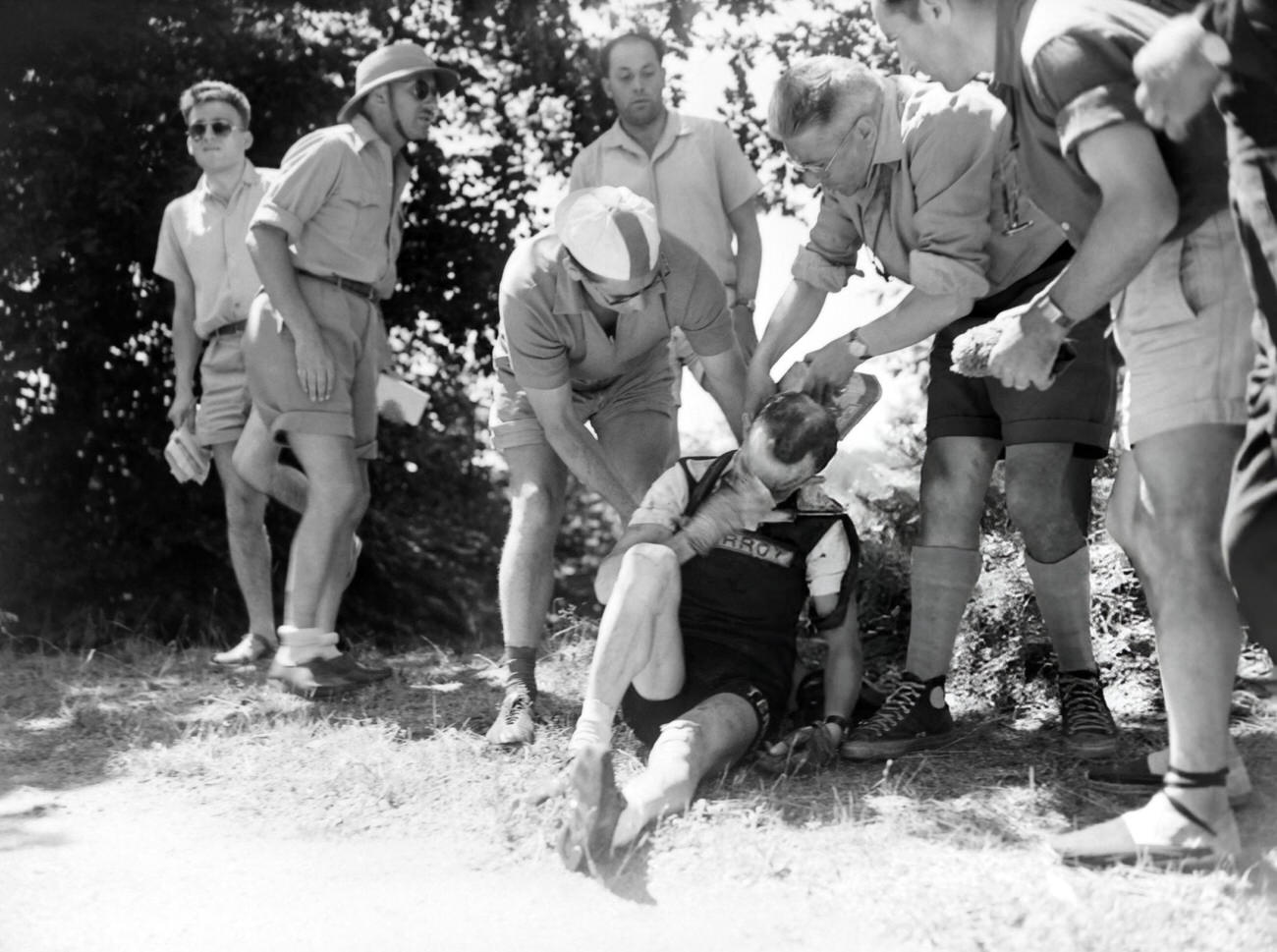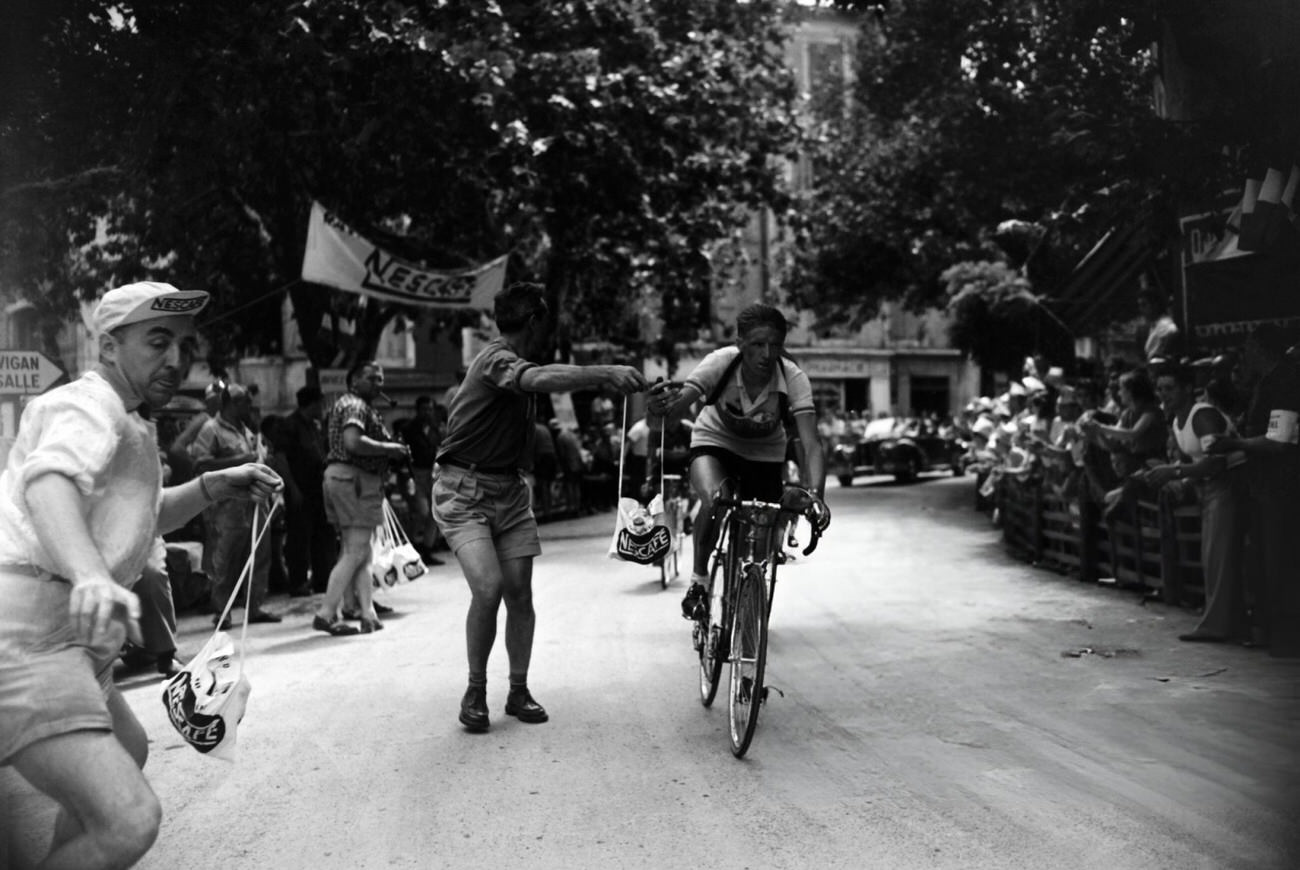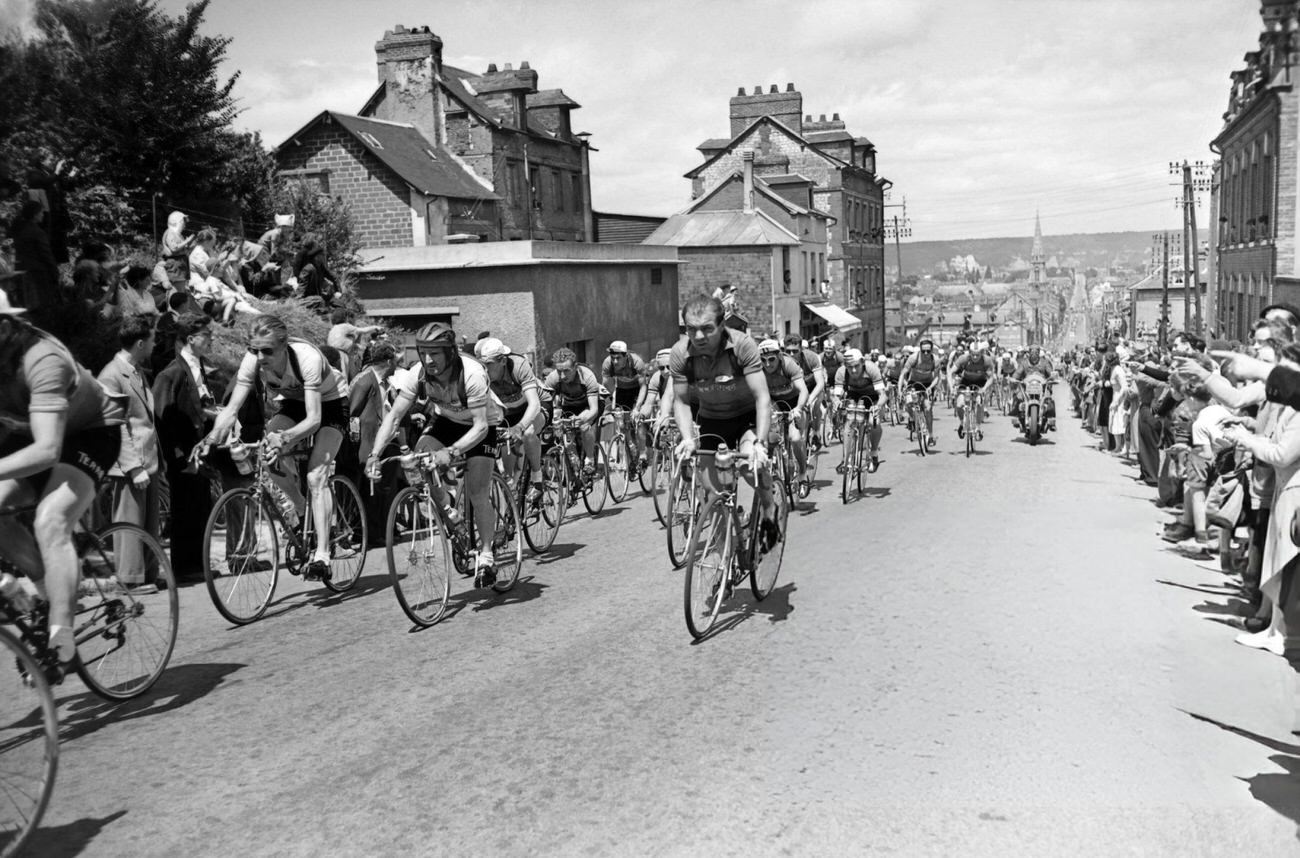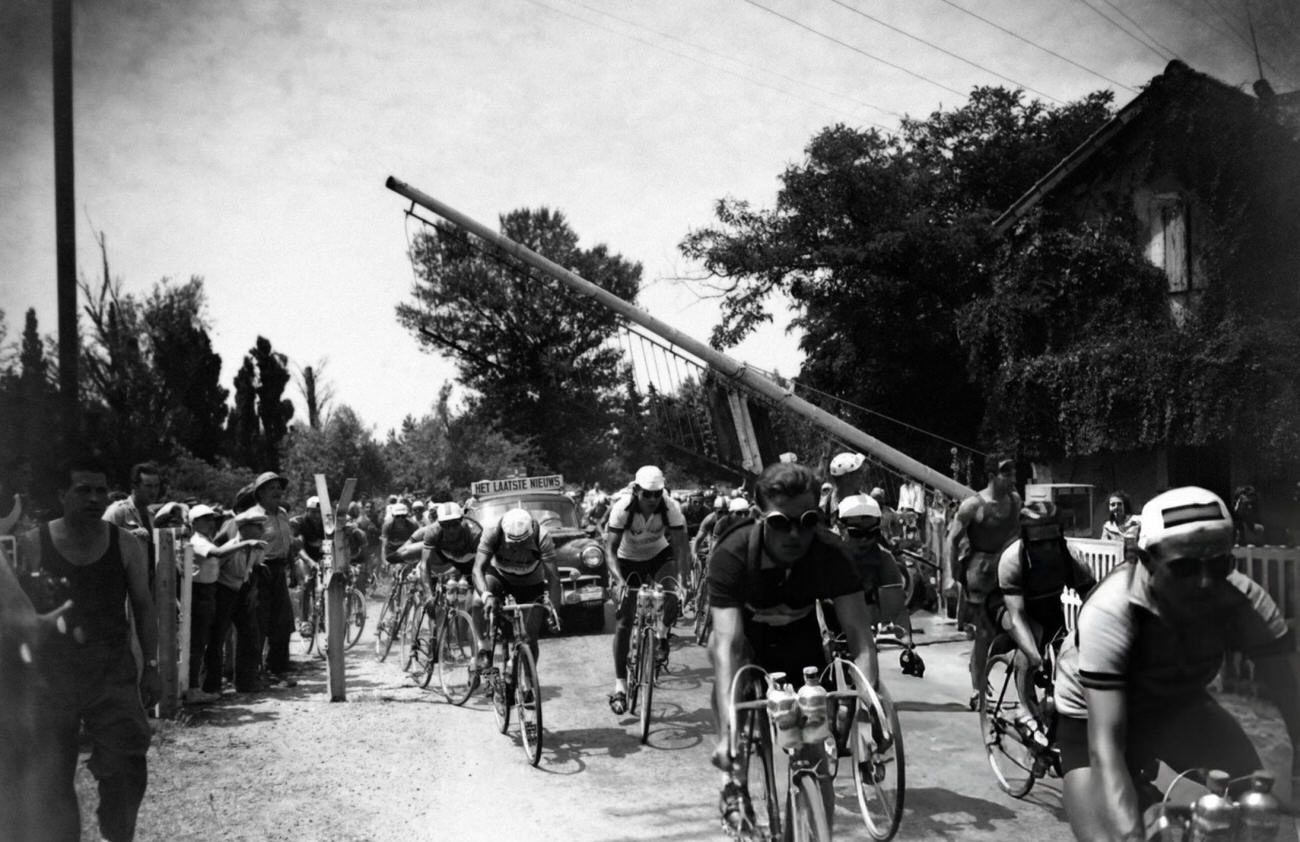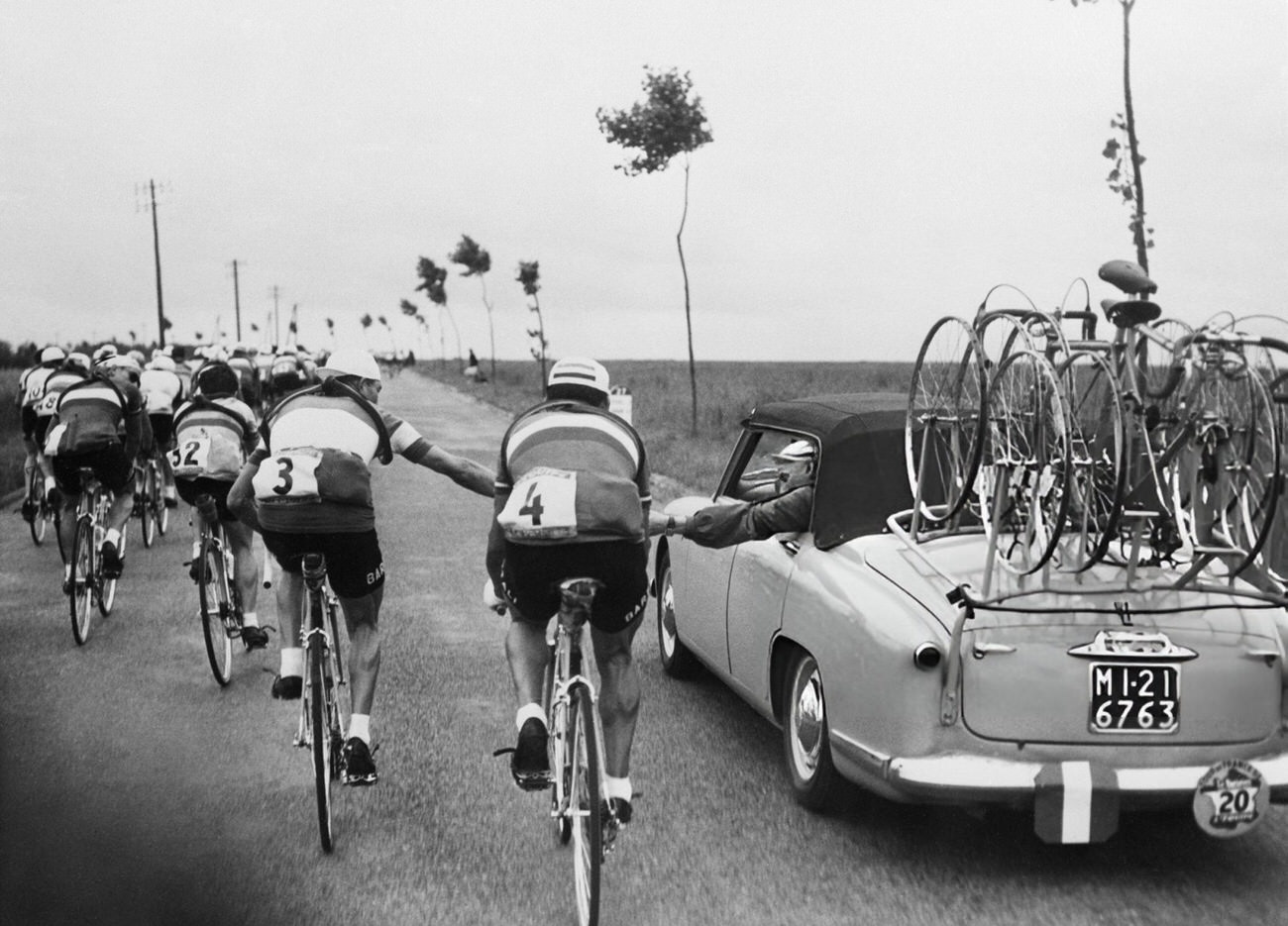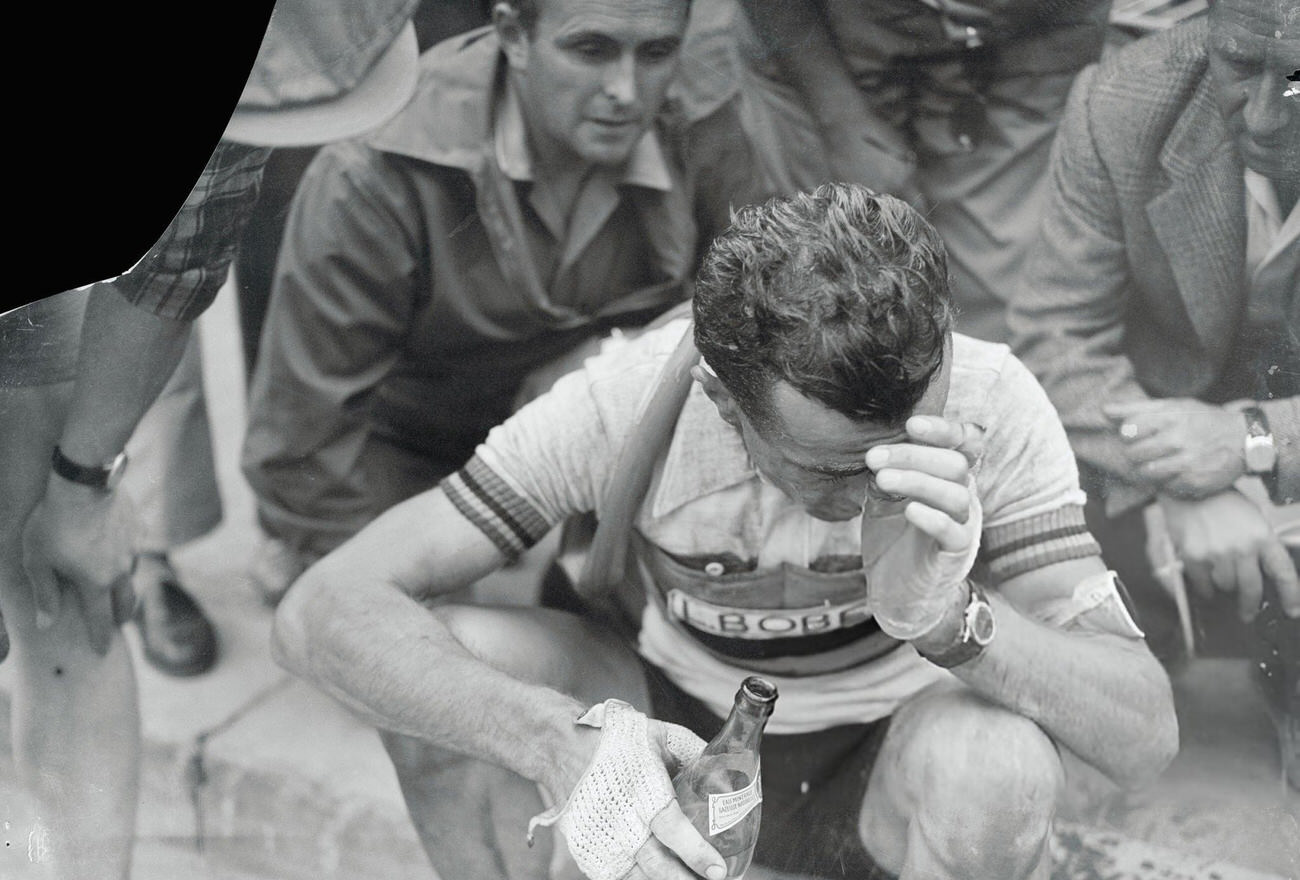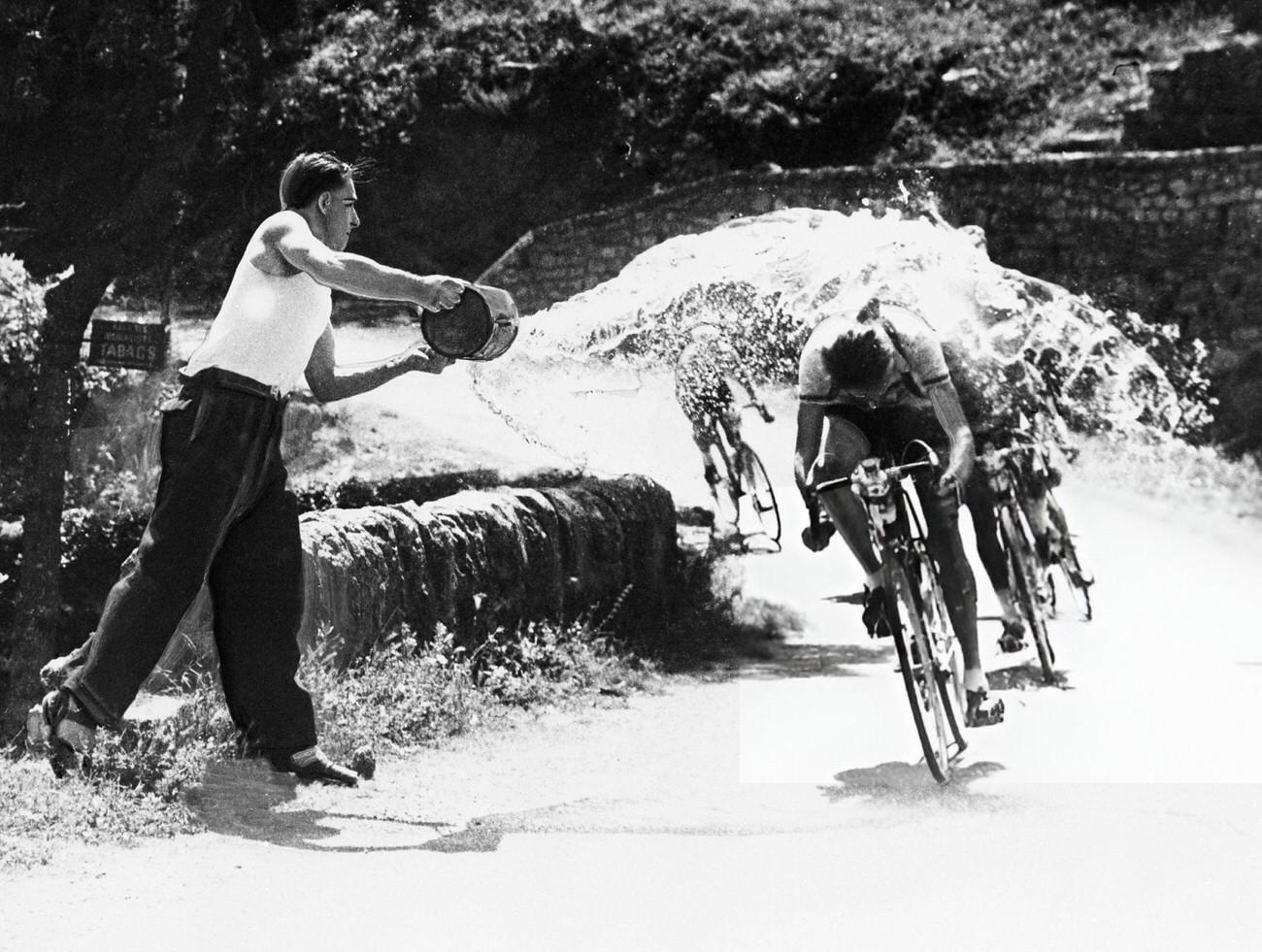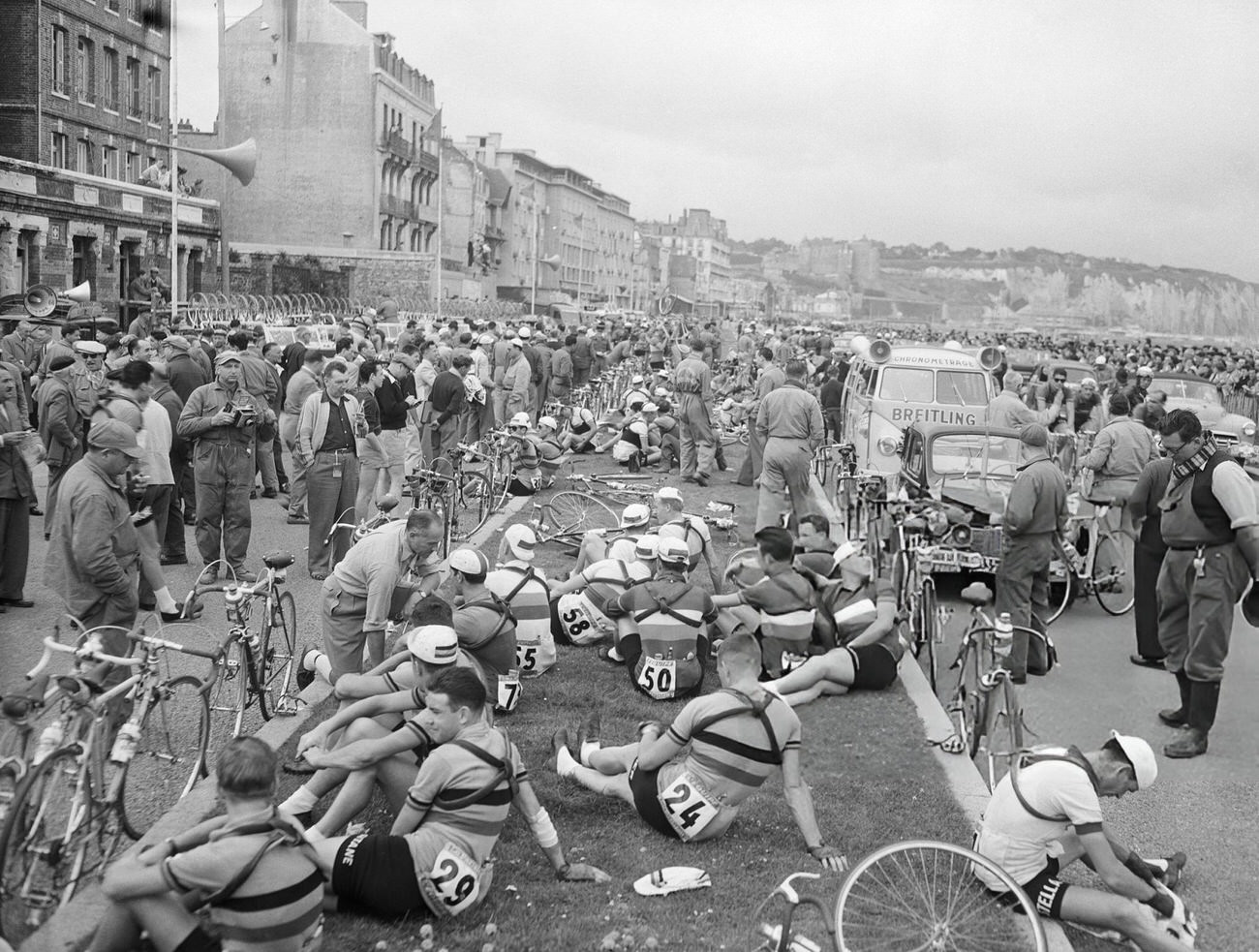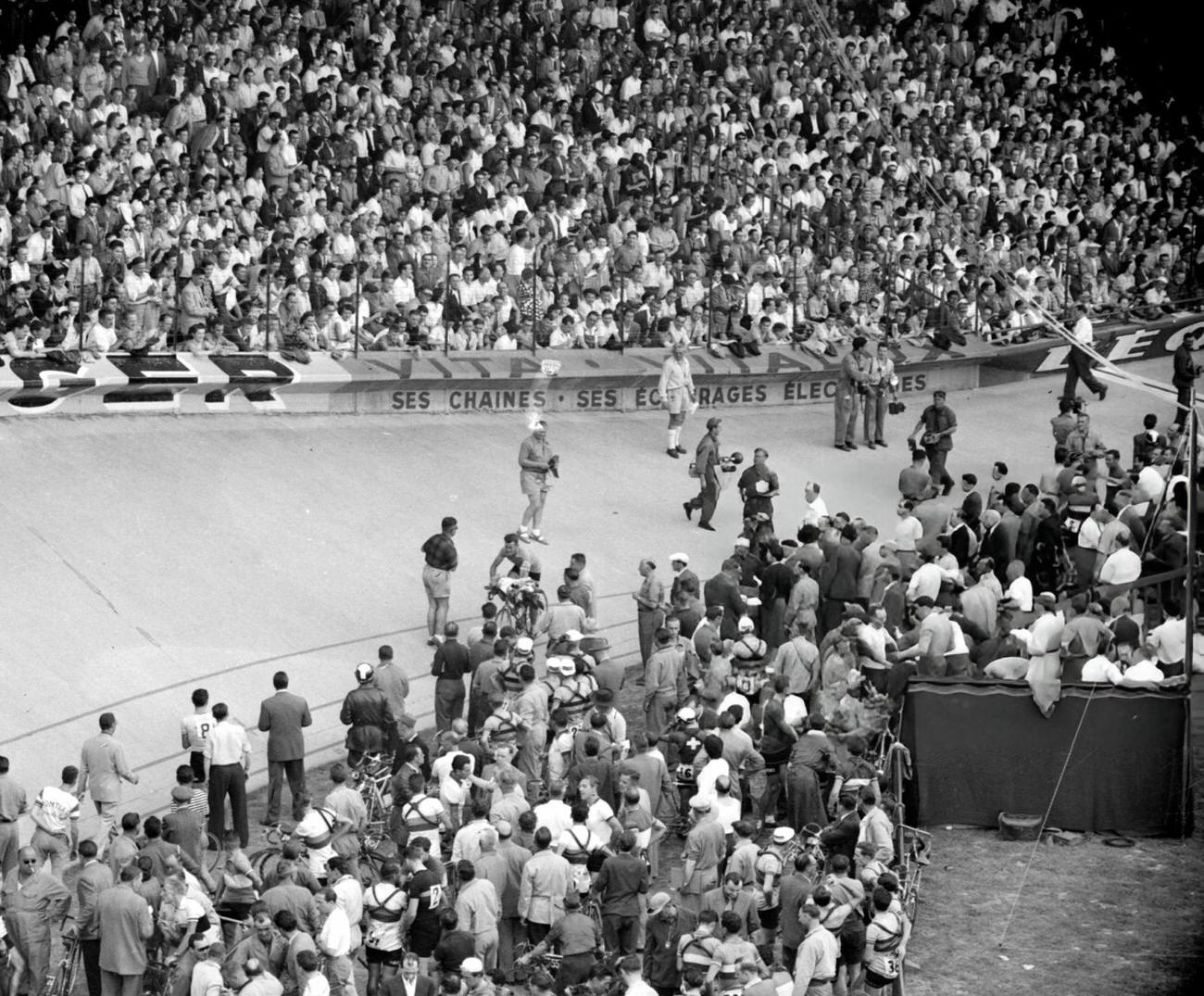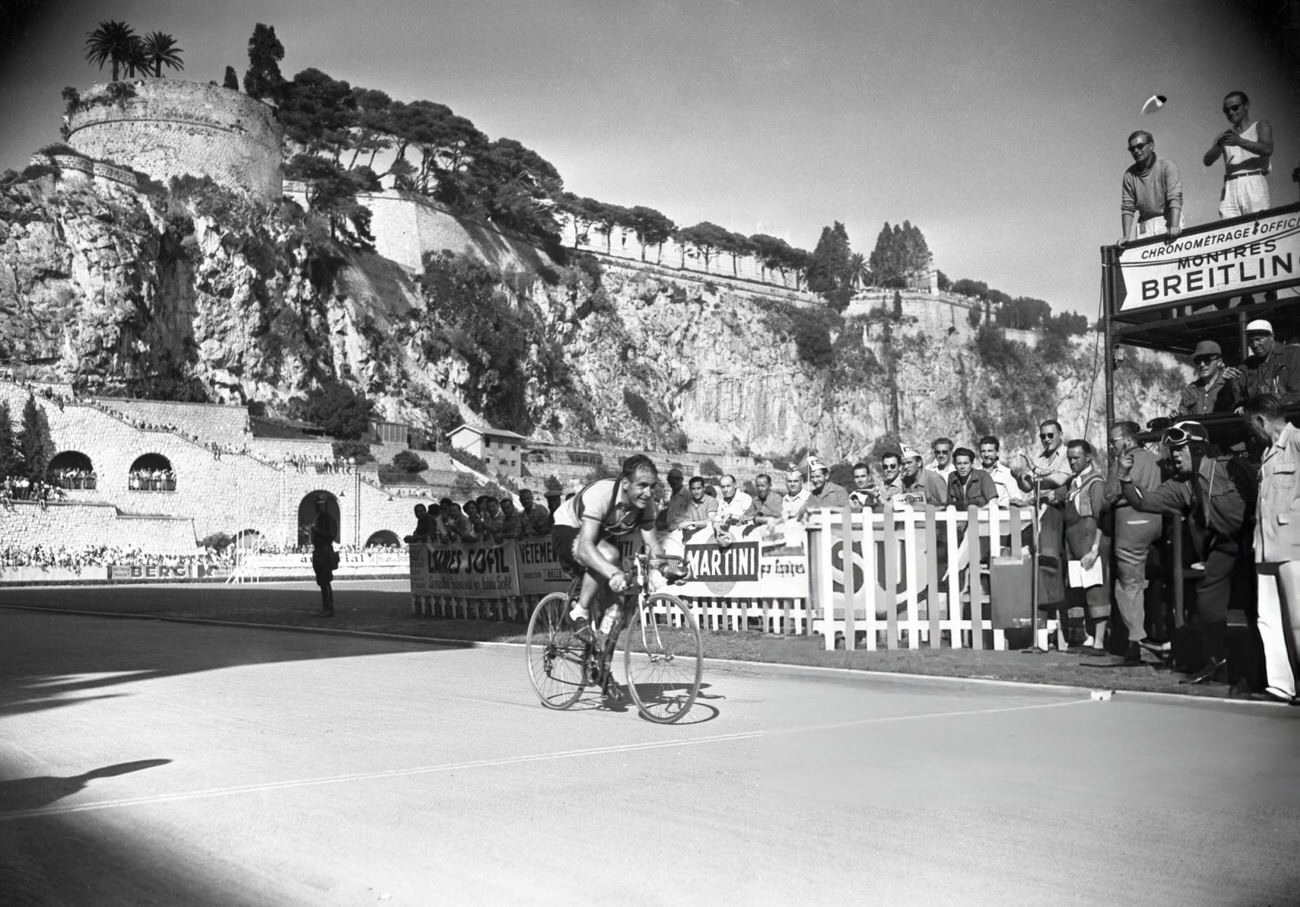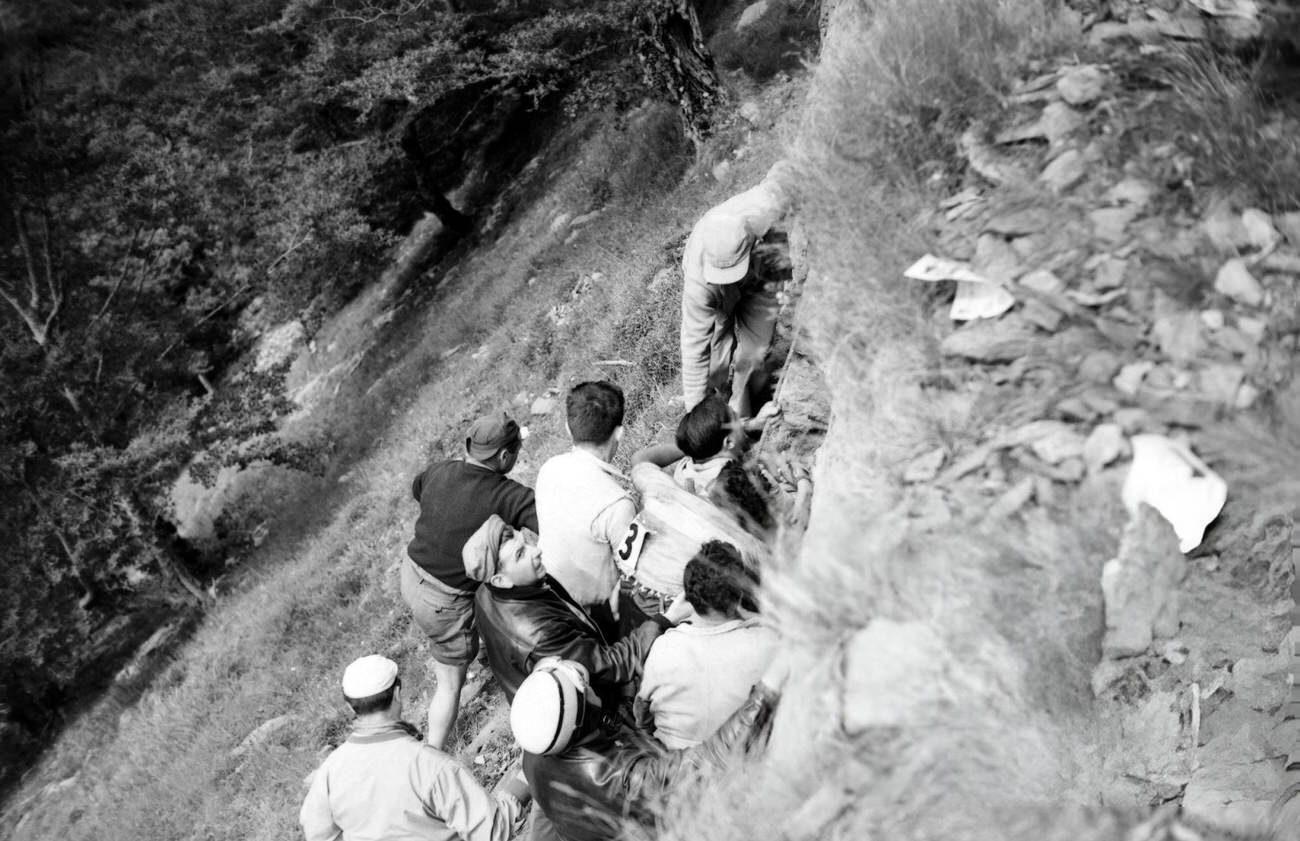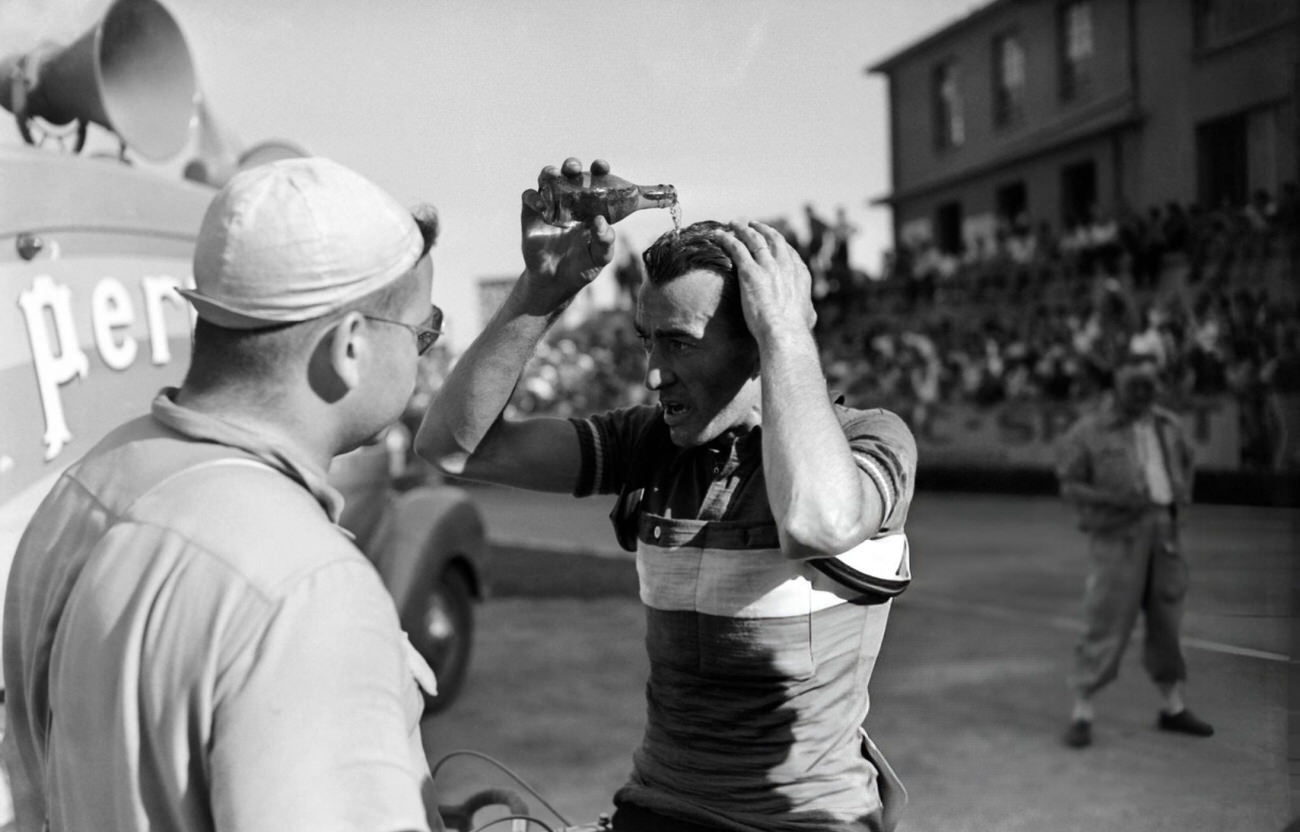The 1953 Tour de France was a race for the ages. Spanning 4,476 kilometers (2,781 miles) over 22 grueling stages, it tested the limits of human endurance and showcased the grit and determination of cycling’s finest athletes. This was the 40th edition of the legendary race, and it would be forever etched in cycling history thanks to the impressive performance of Louison Bobet, who claimed his first of three consecutive Tour de France victories.
The race kicked off on July 3rd in Strasbourg, with 119 riders representing national and regional teams from across Europe. The route snaked its way counter-clockwise through France, Belgium, and Luxembourg, tackling challenging mountain passes in the Alps and Pyrenees. Riders faced scorching summer heat, treacherous descents, and the constant pressure of maintaining a relentless pace day after day.
Bobet, riding for the French national team, emerged as a dominant force early on. He was a skilled climber and a powerful time trialist, a combination that proved crucial in the challenging terrain of the Tour. He seized the yellow jersey, awarded to the race leader, in the 8th stage and held onto it with tenacity for the remainder of the race.
This Tour was not without its dramatic moments. Stage 11, a particularly brutal stretch through the Pyrenees, saw riders battling exhaustion and dehydration in sweltering heat. Jean Malléjac, one of Bobet’s main rivals, famously collapsed from heatstroke and had to be revived with roadside assistance. Despite the setbacks, he courageously continued the race, ultimately finishing in a respectable second place overall.
Another memorable stage was the 21st, a 129-kilometer individual time trial. Bobet, already holding a commanding lead, solidified his victory with a masterful performance, further demonstrating his all-around cycling prowess. He crossed the finish line in Paris on July 26th, greeted by jubilant crowds and hailed as a national hero.


